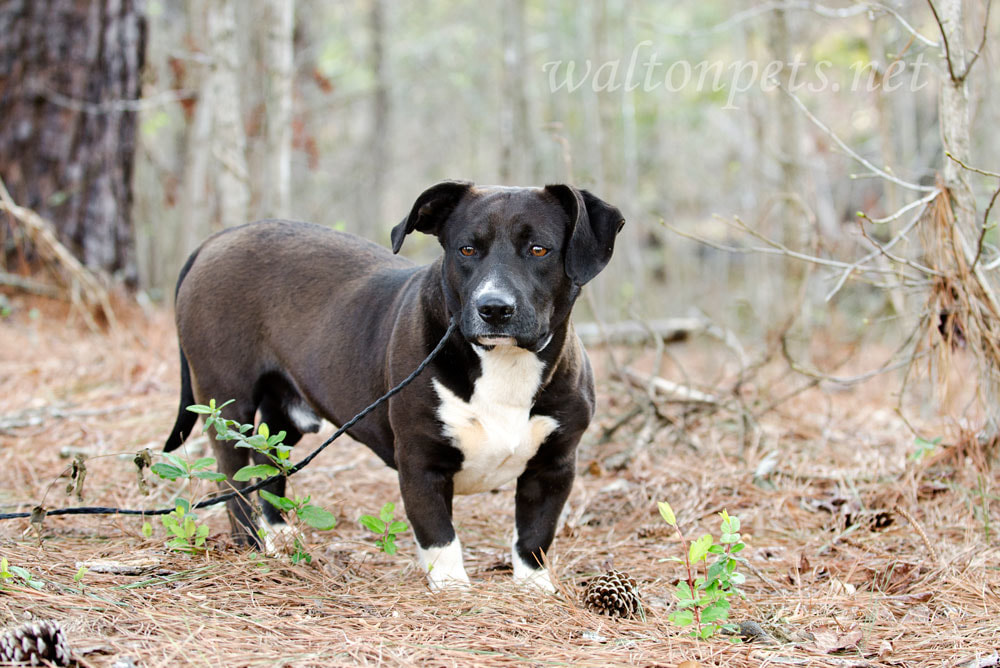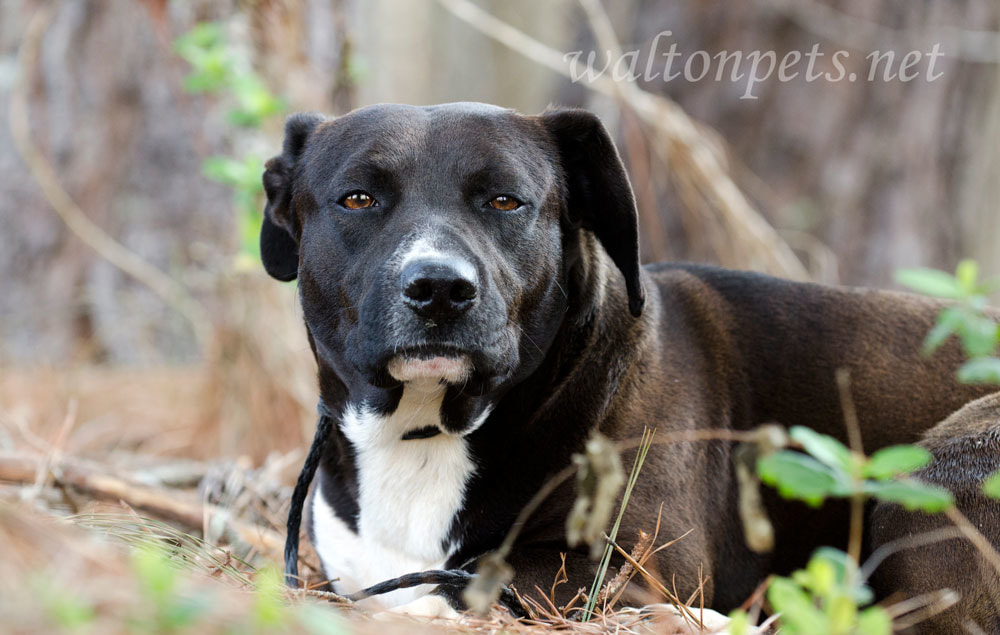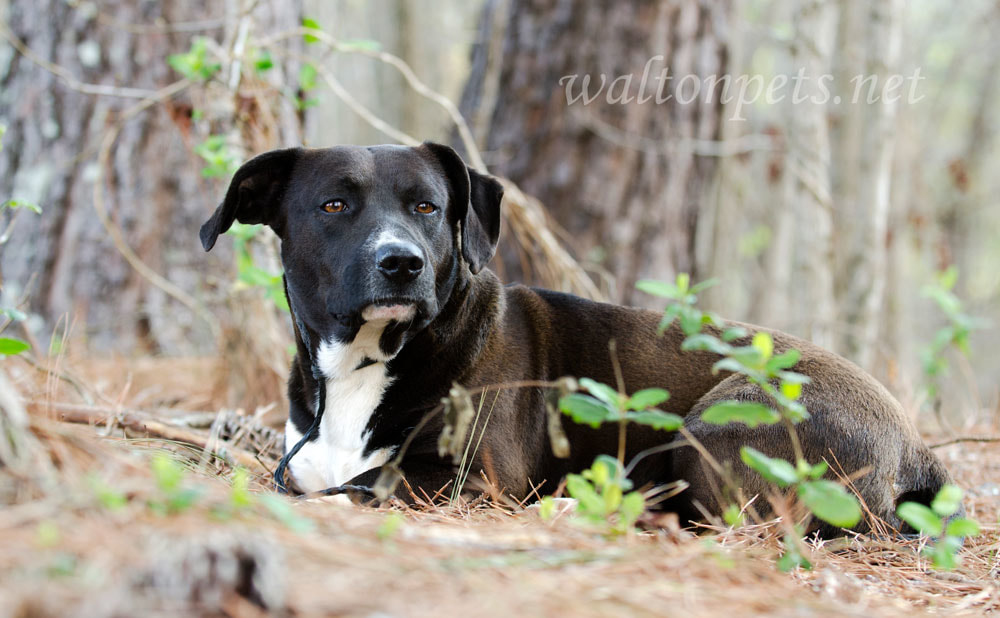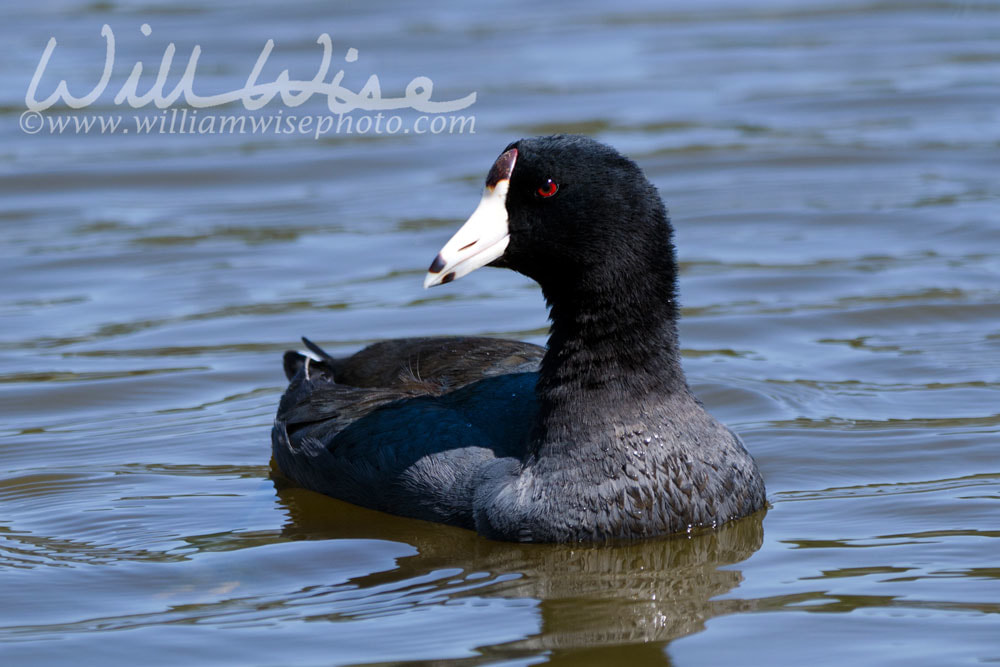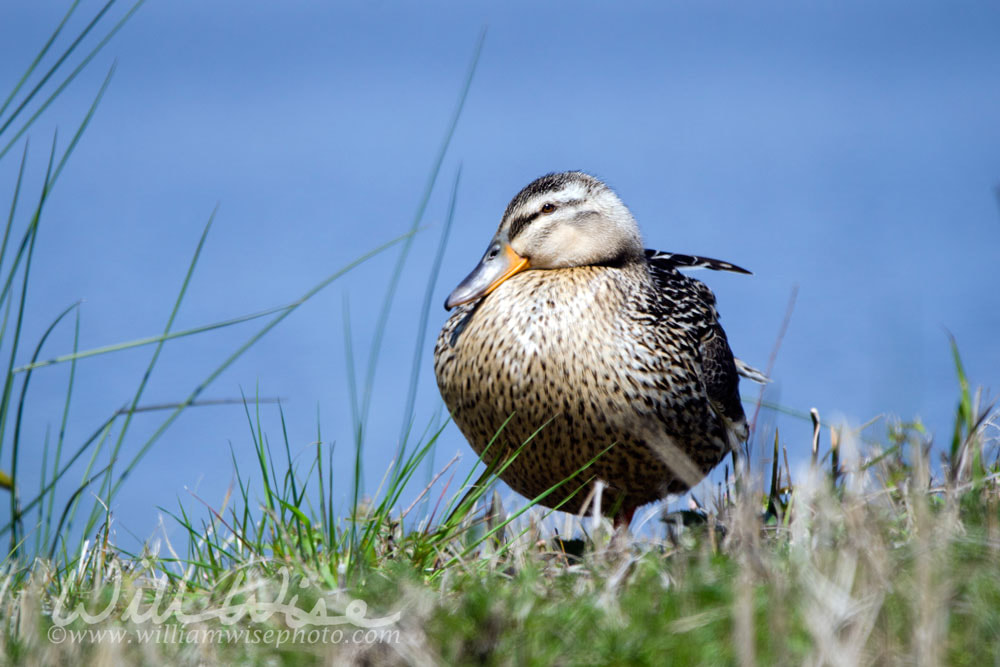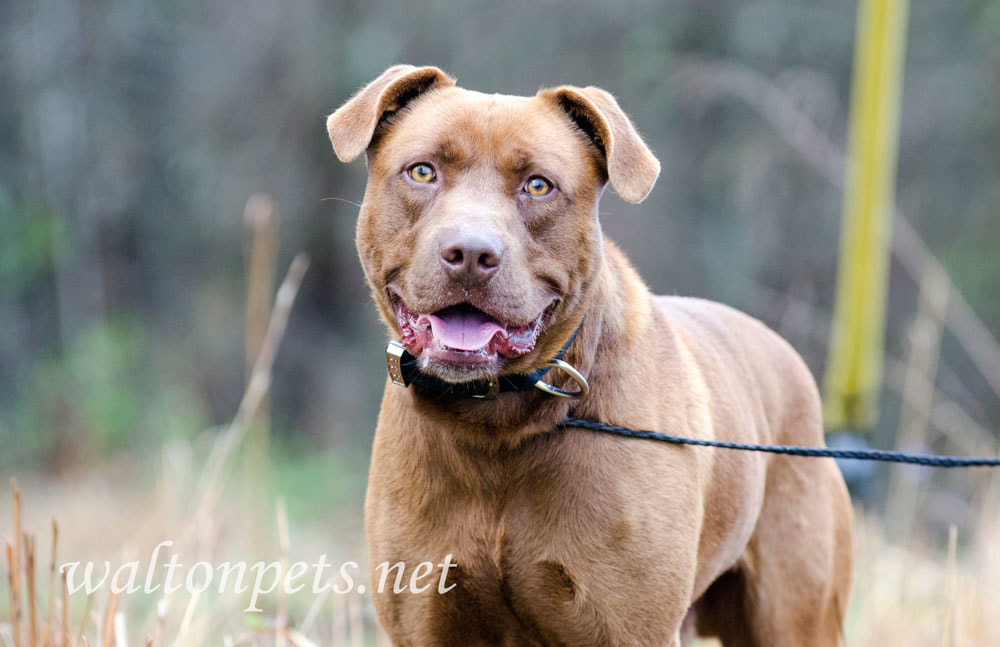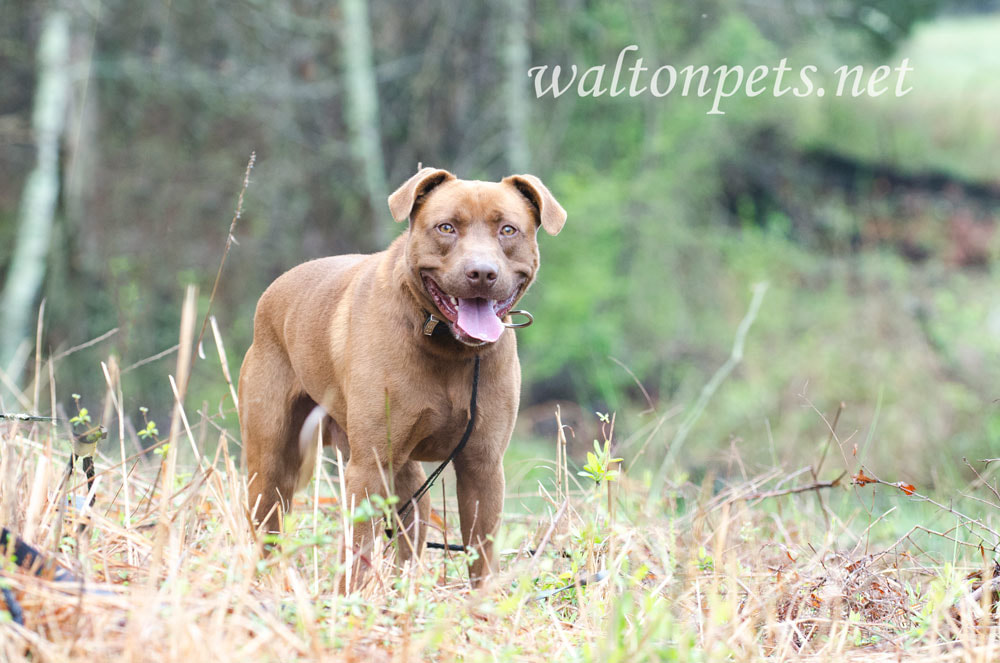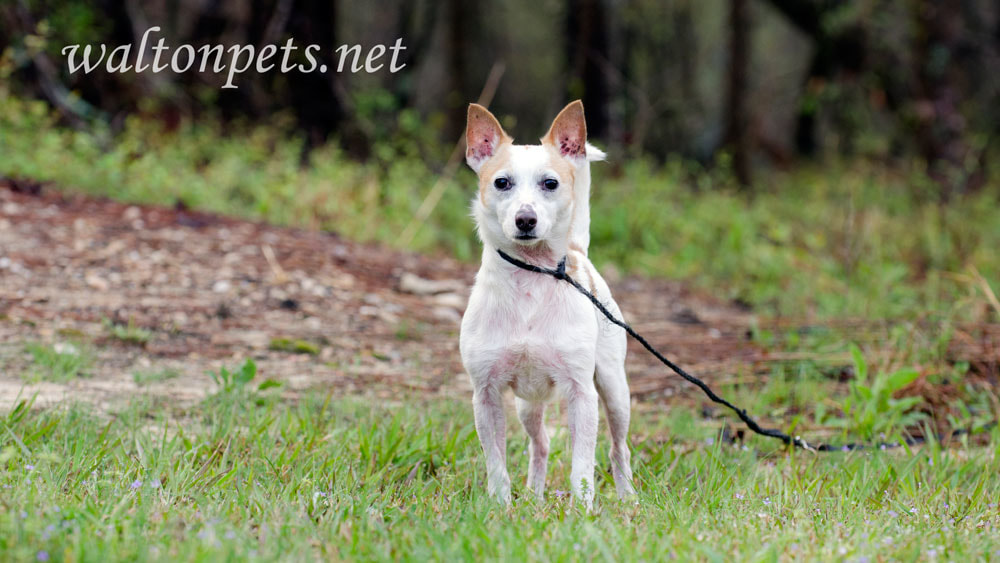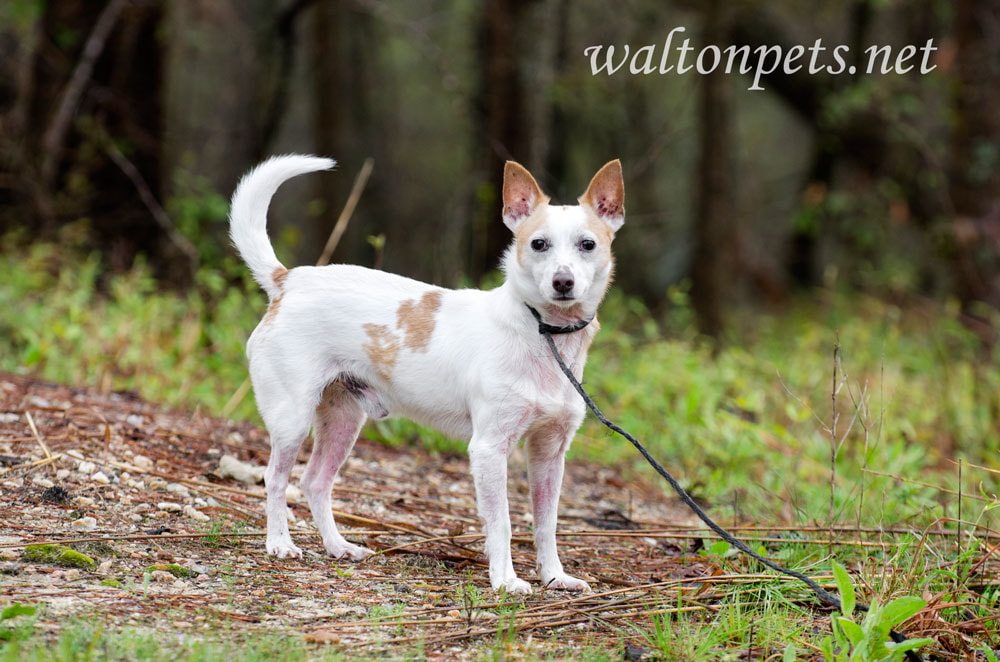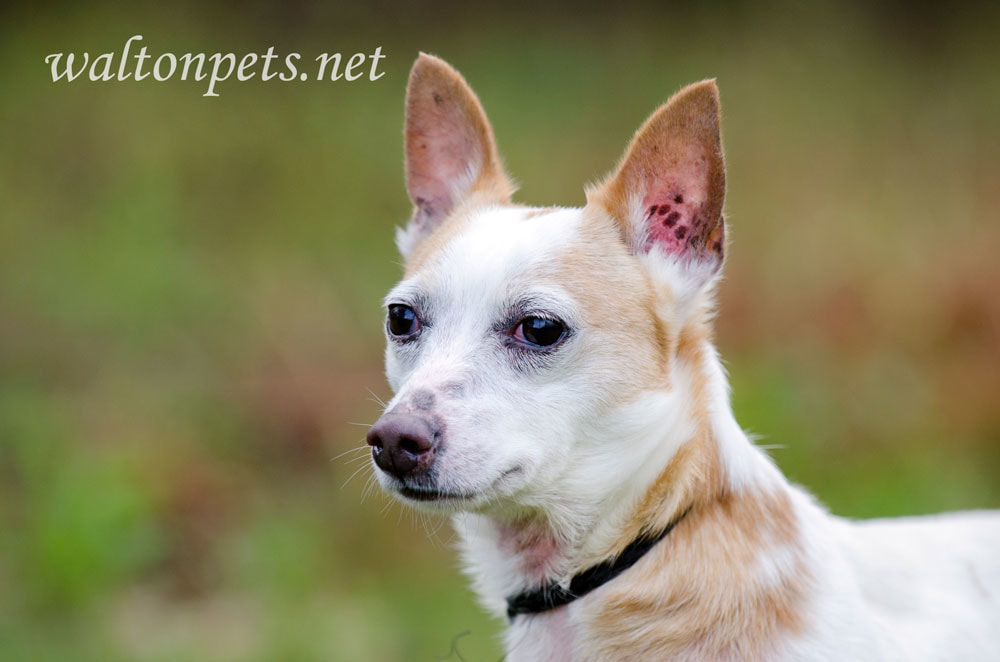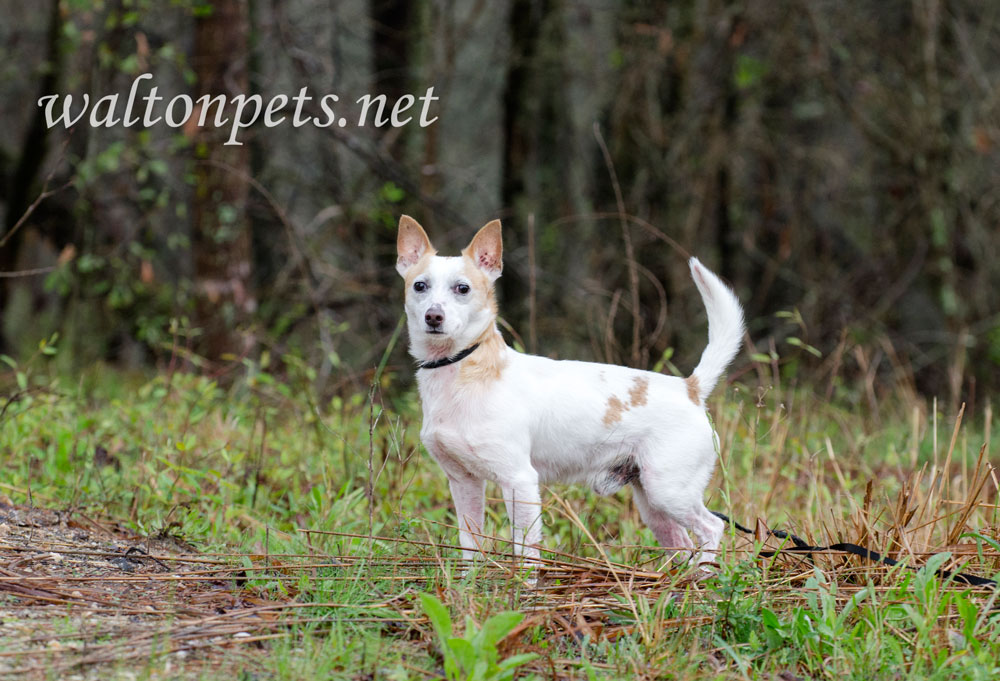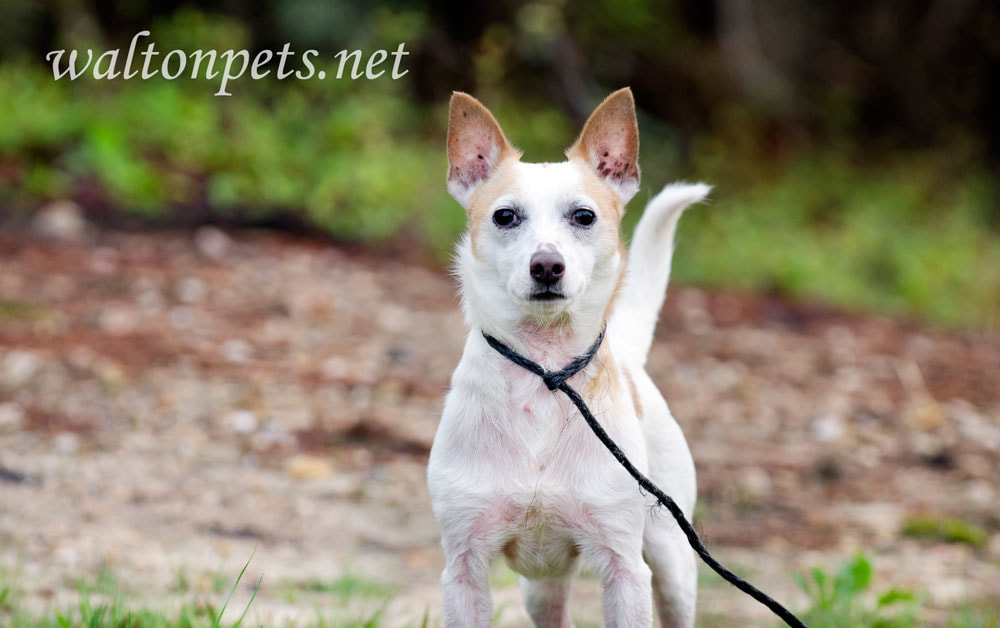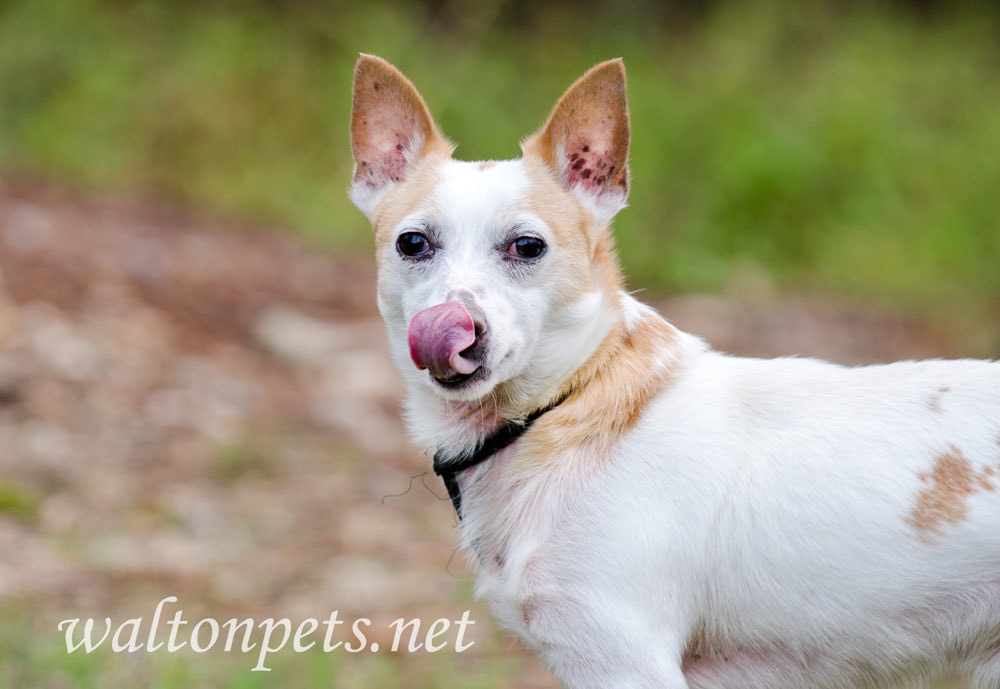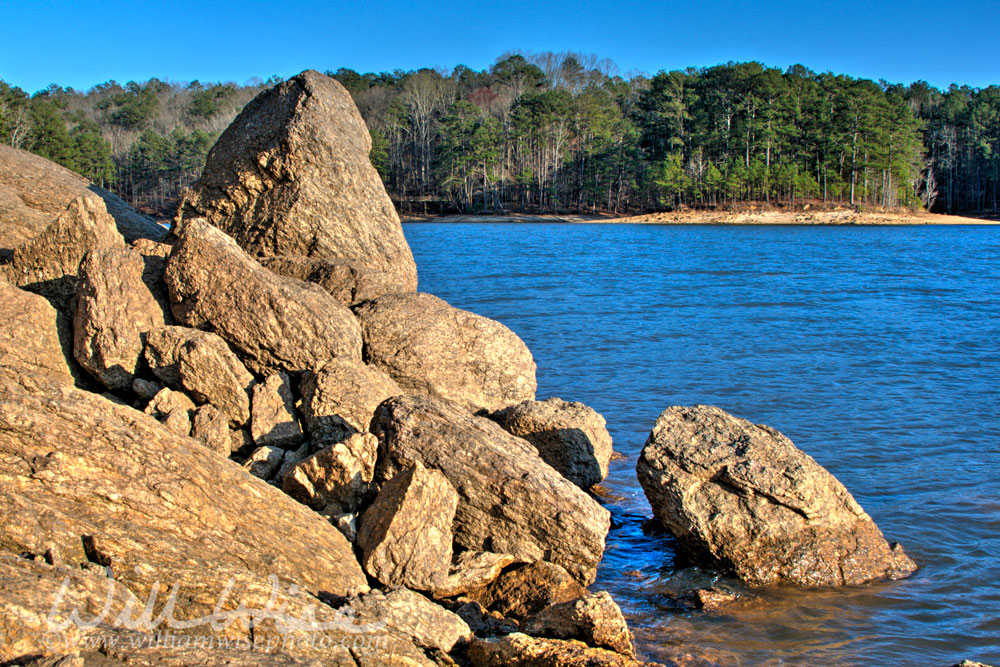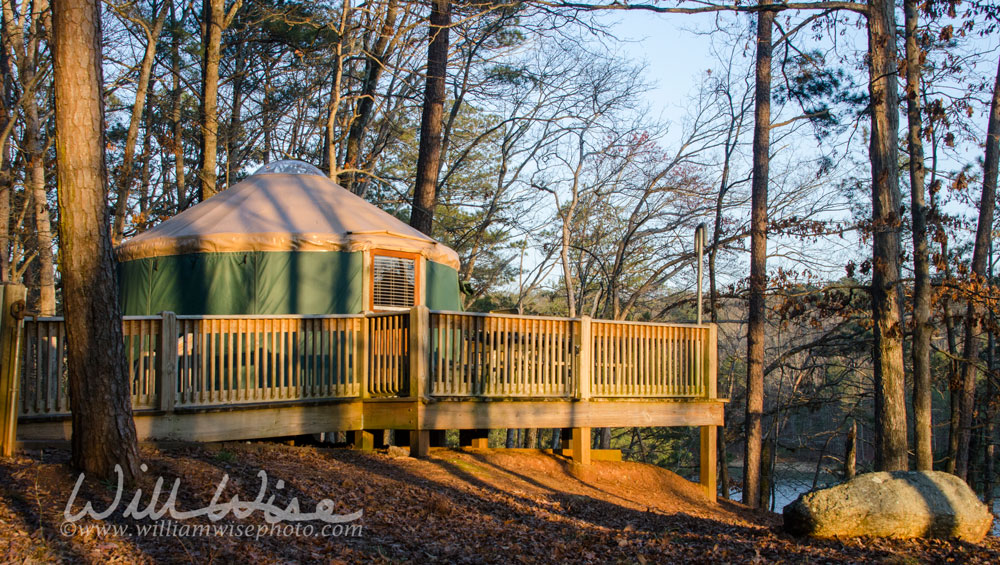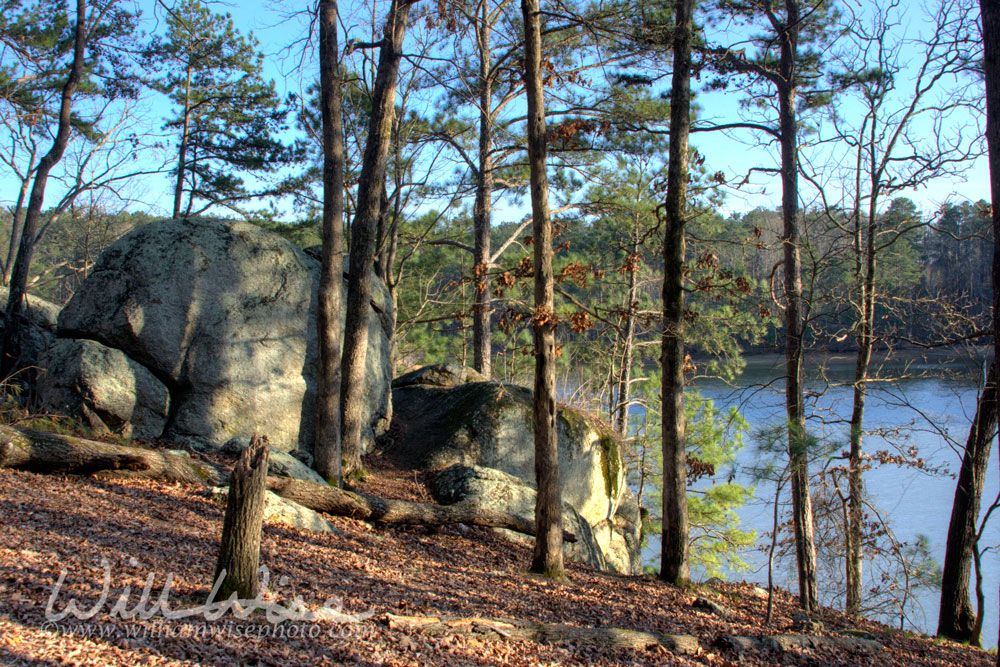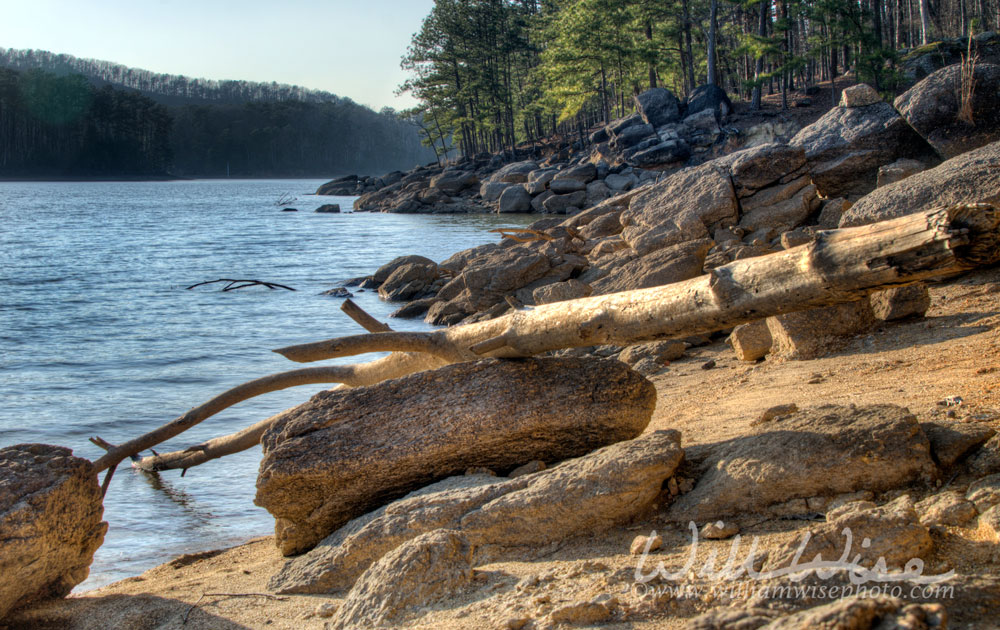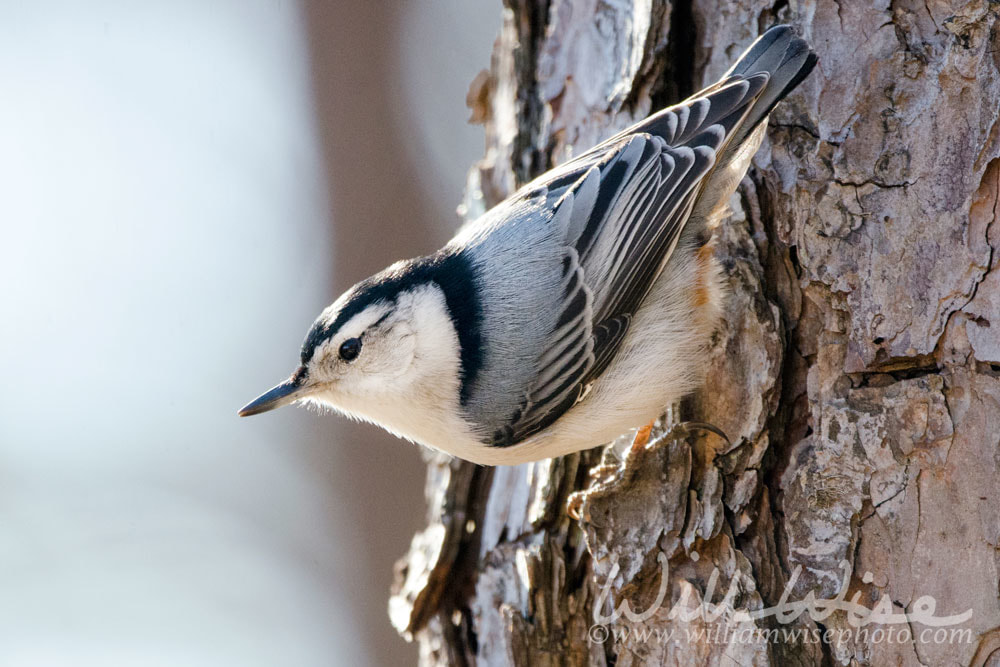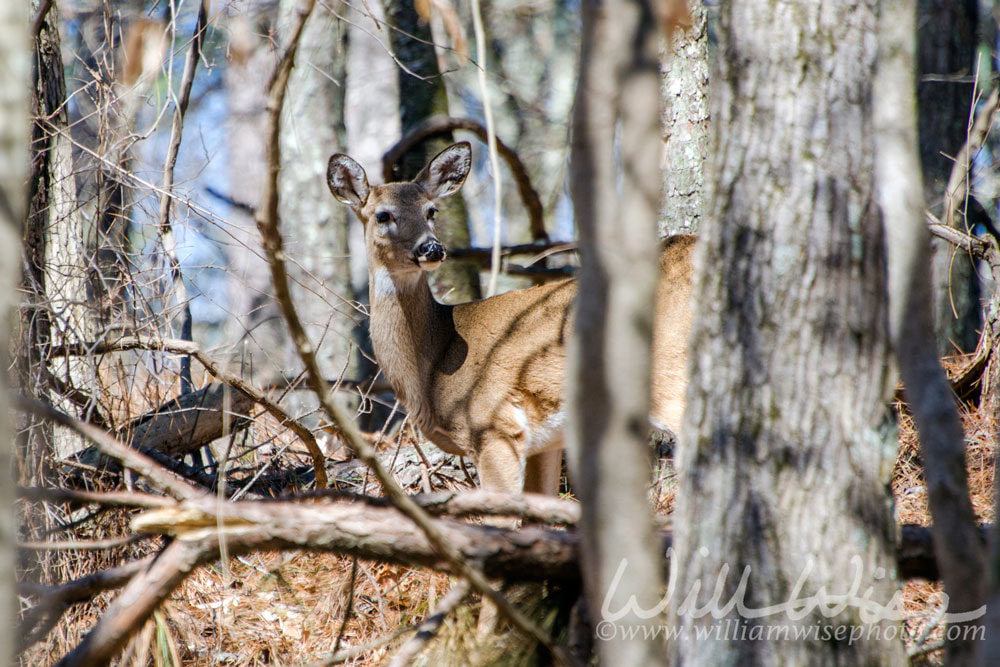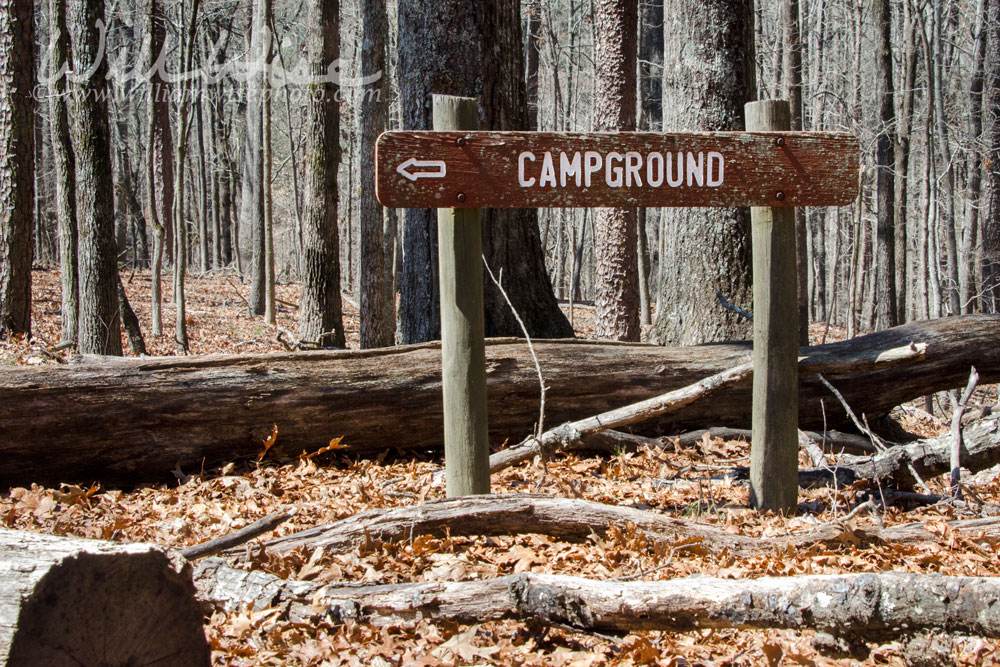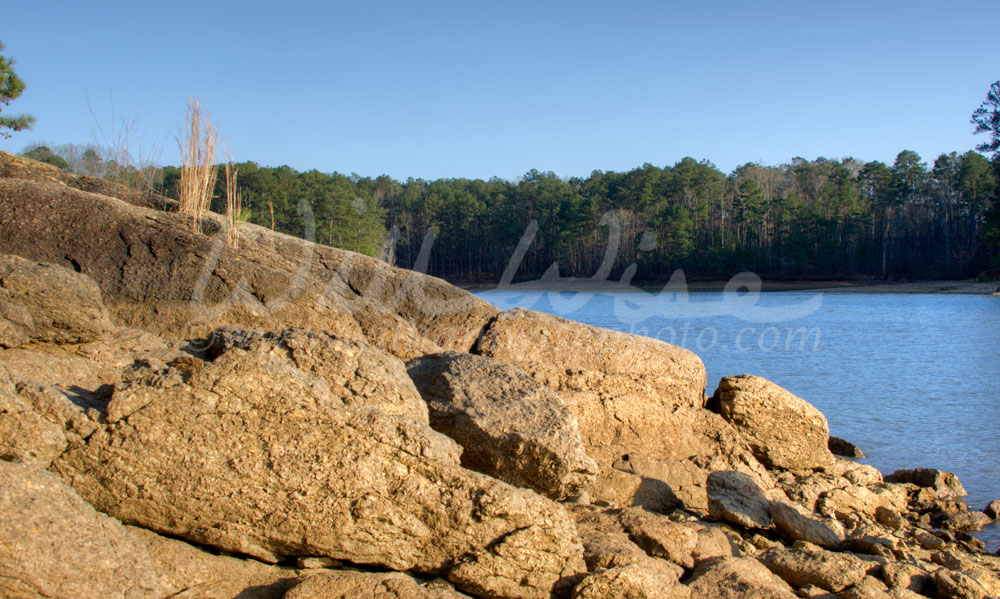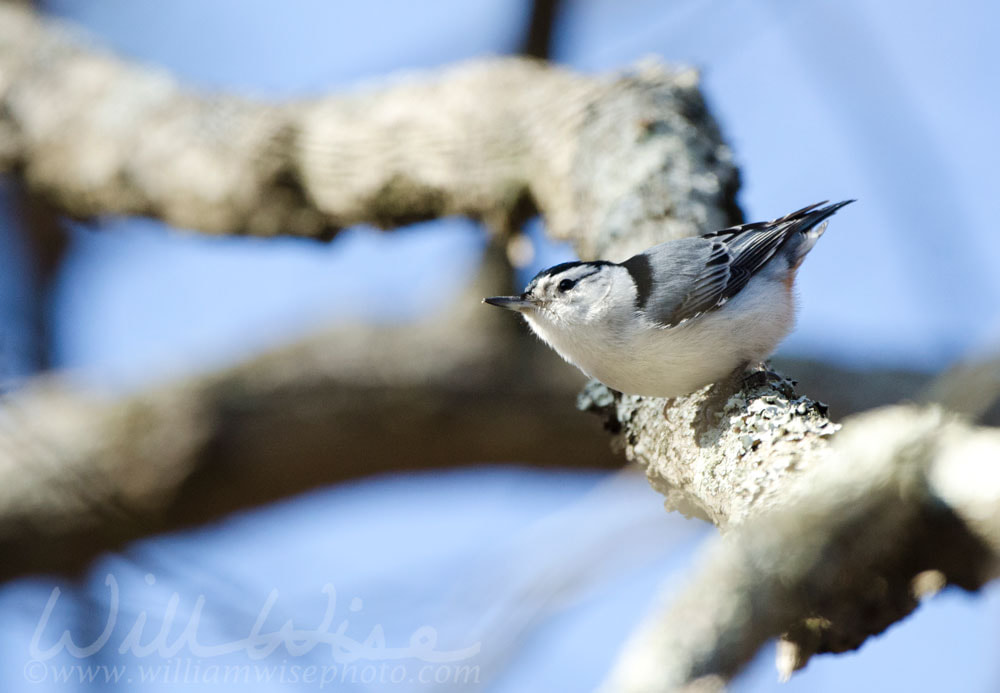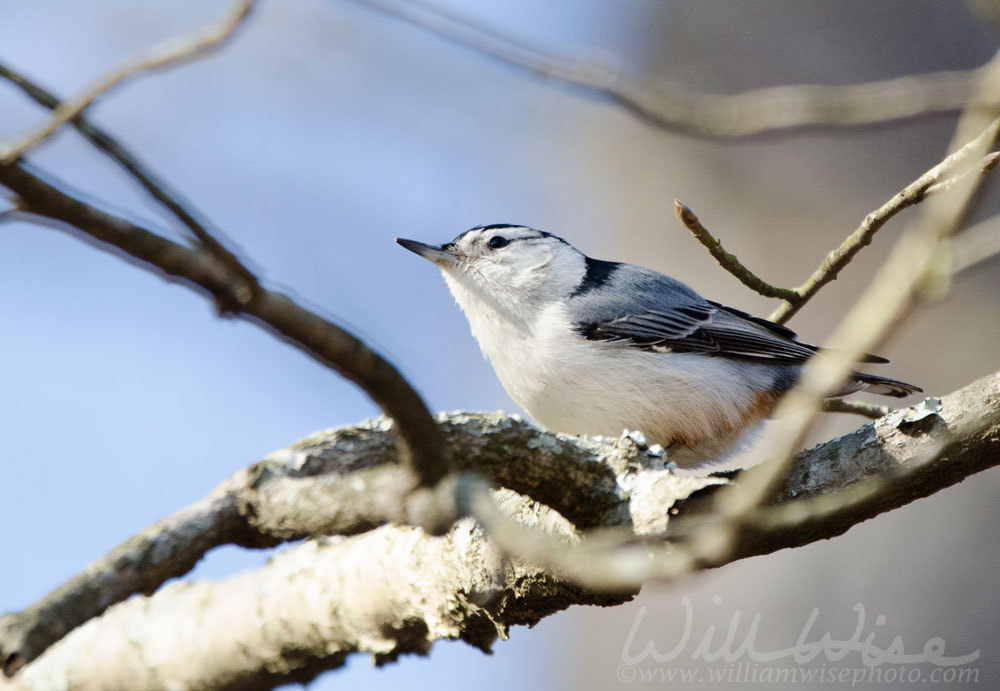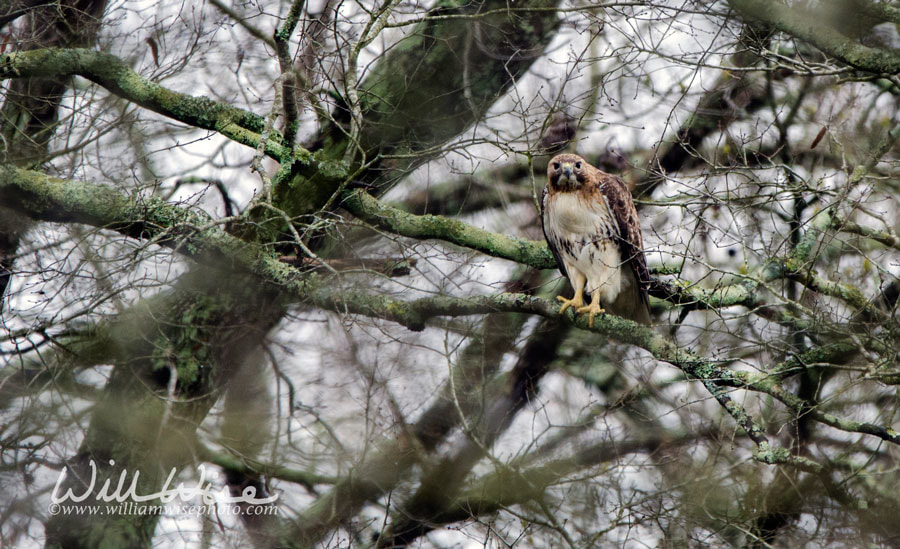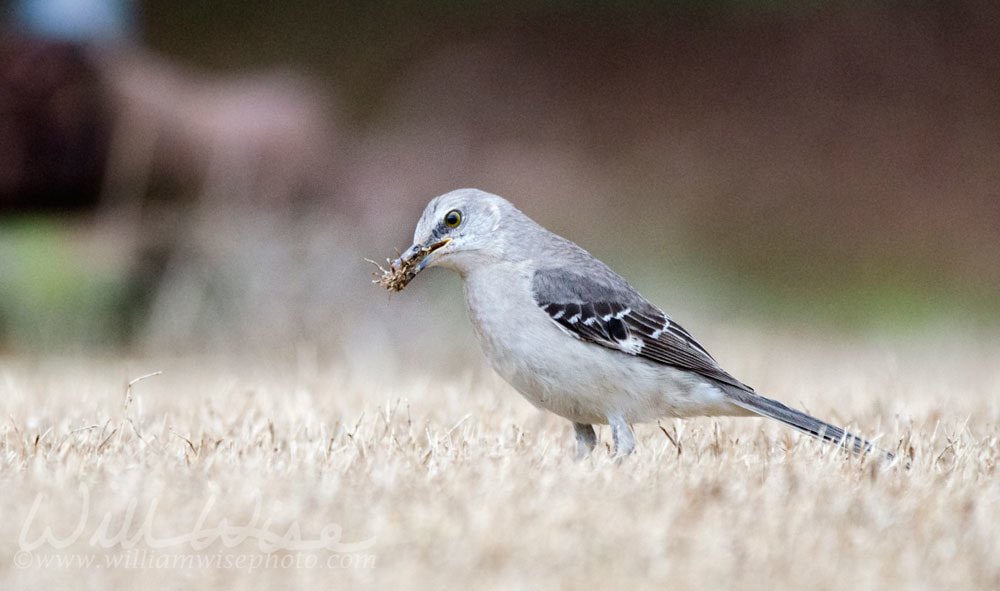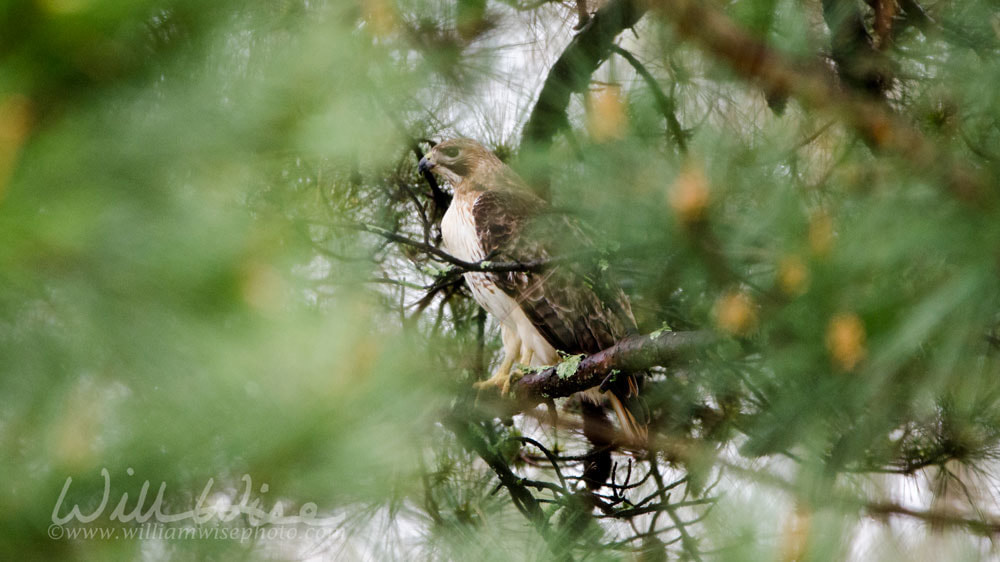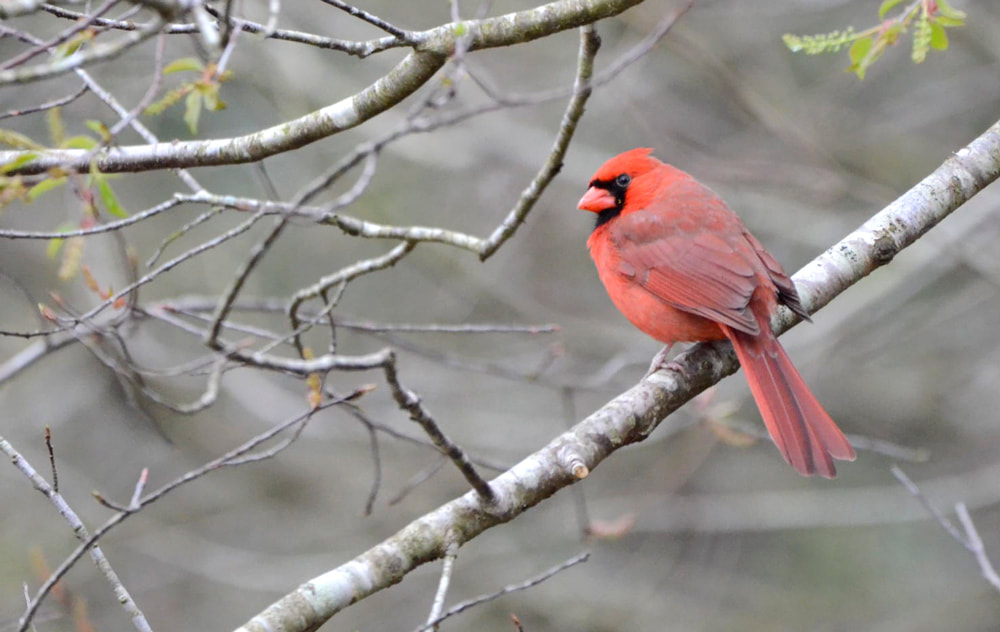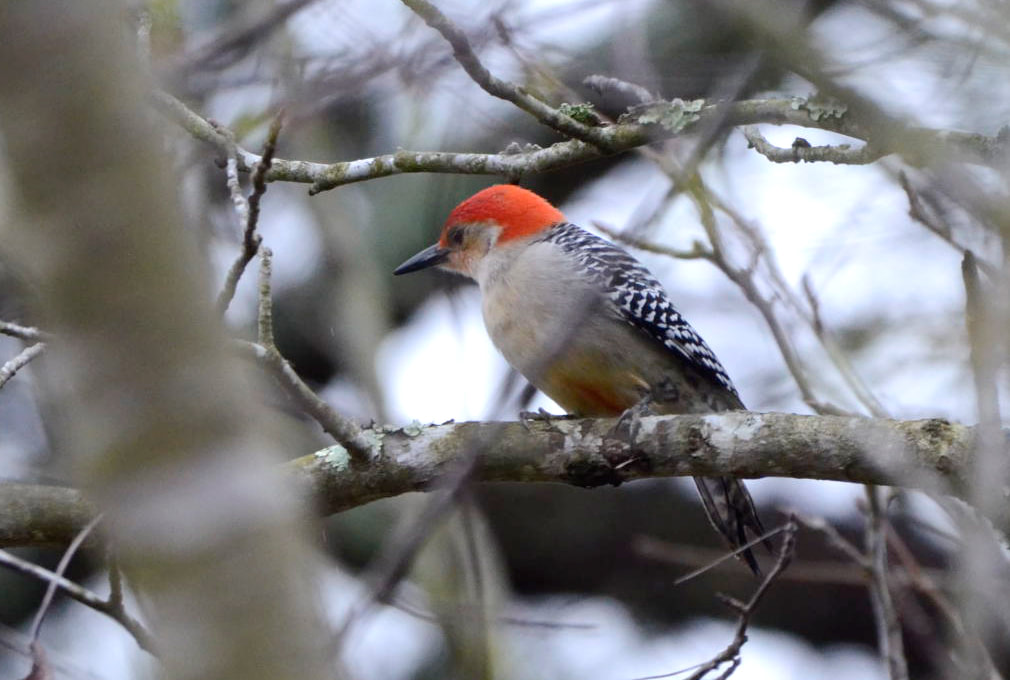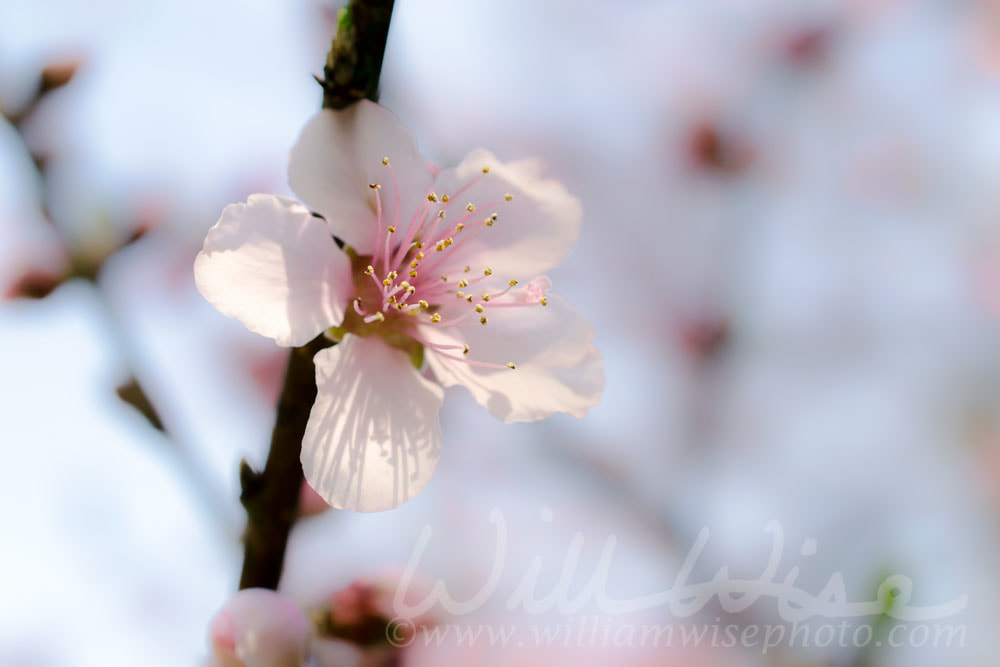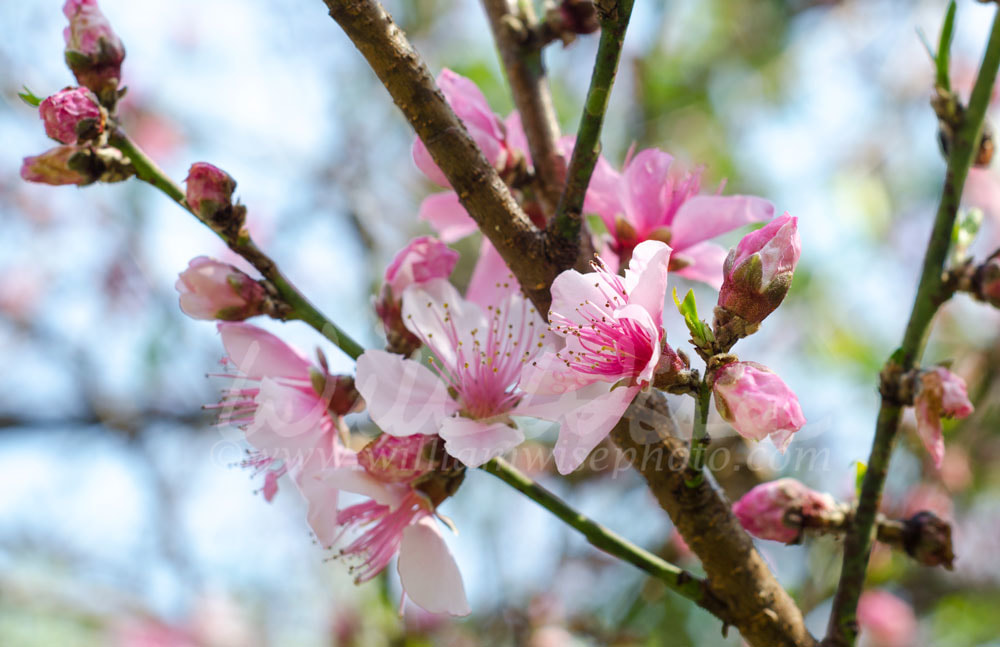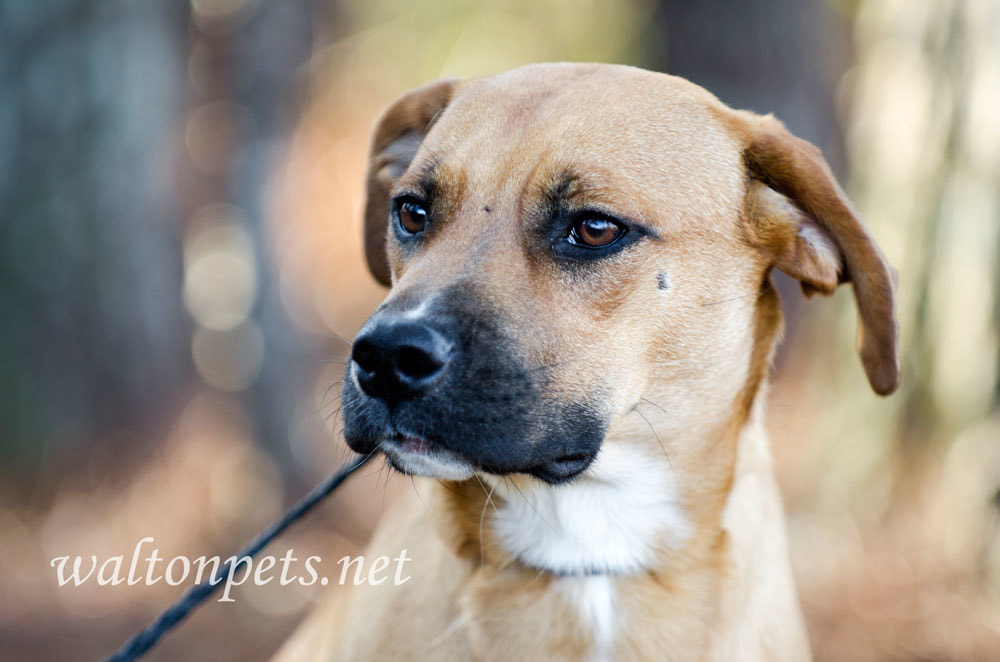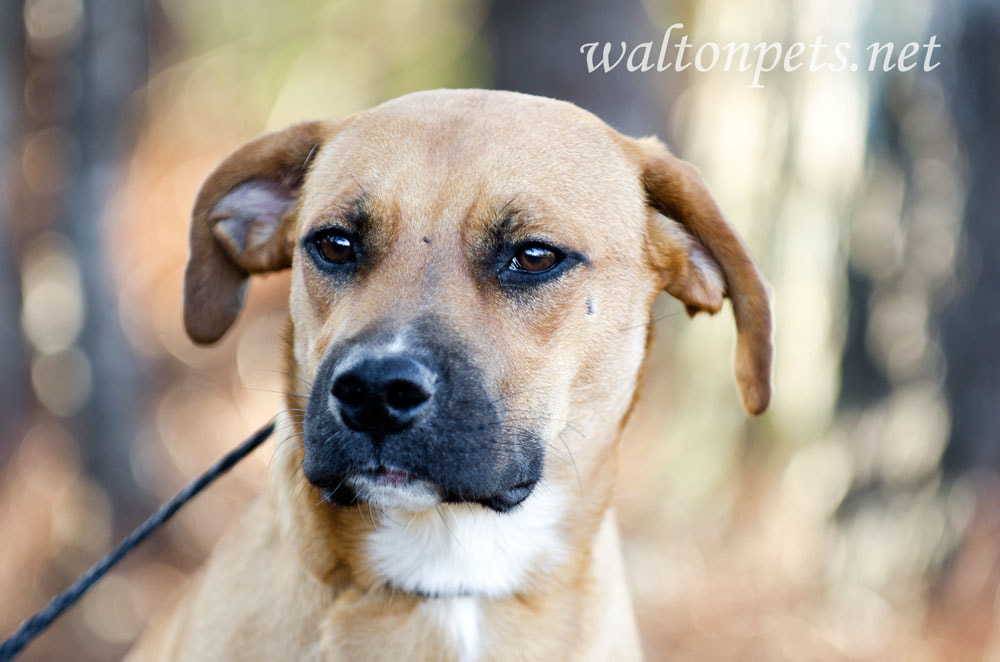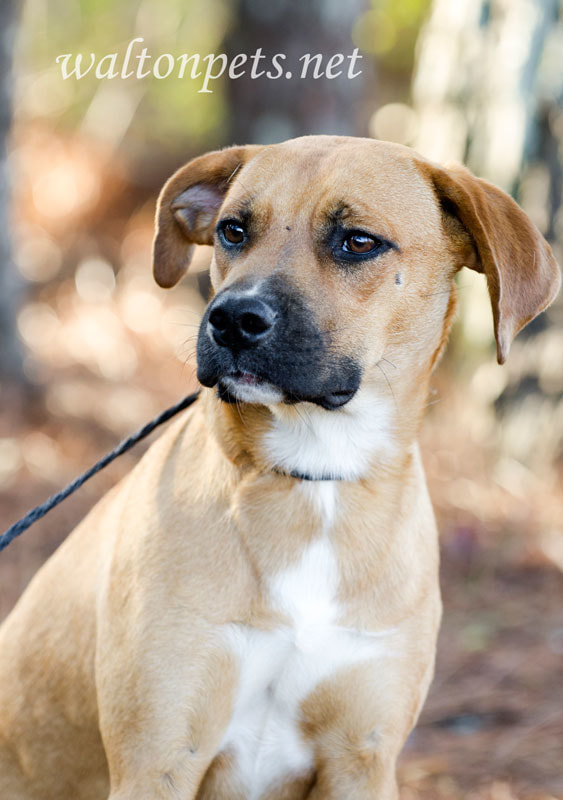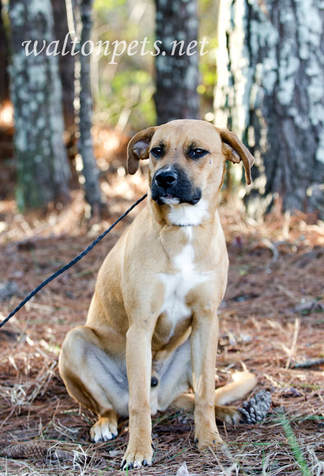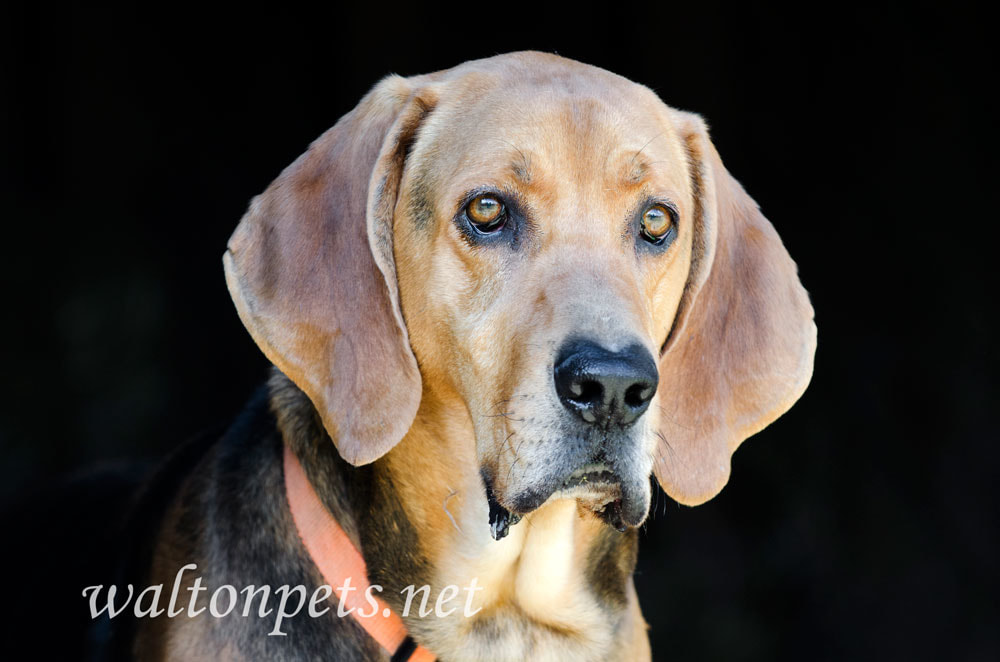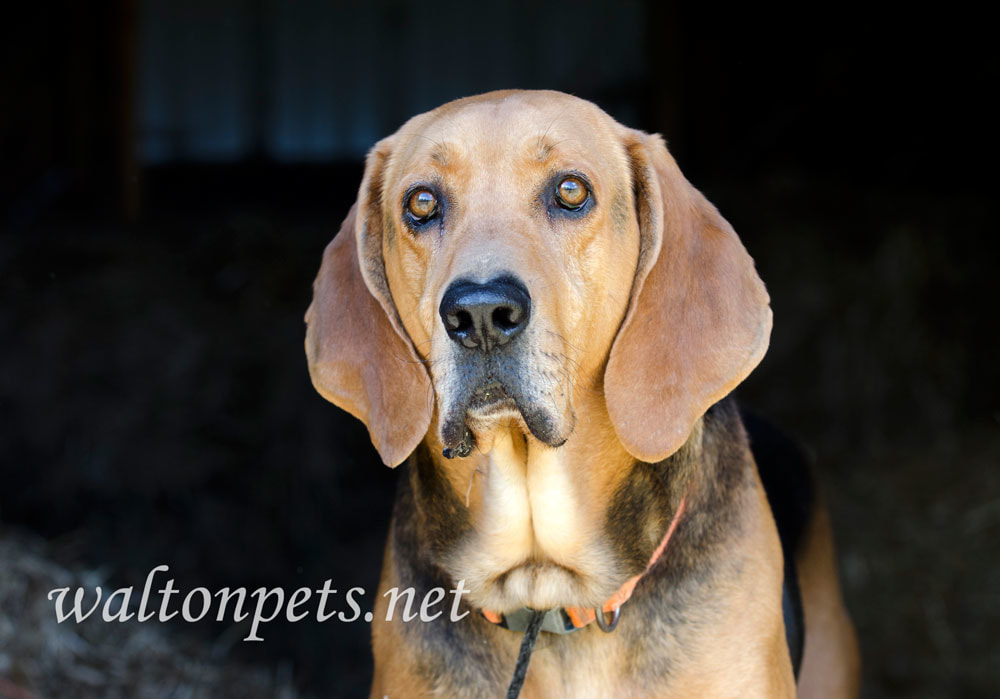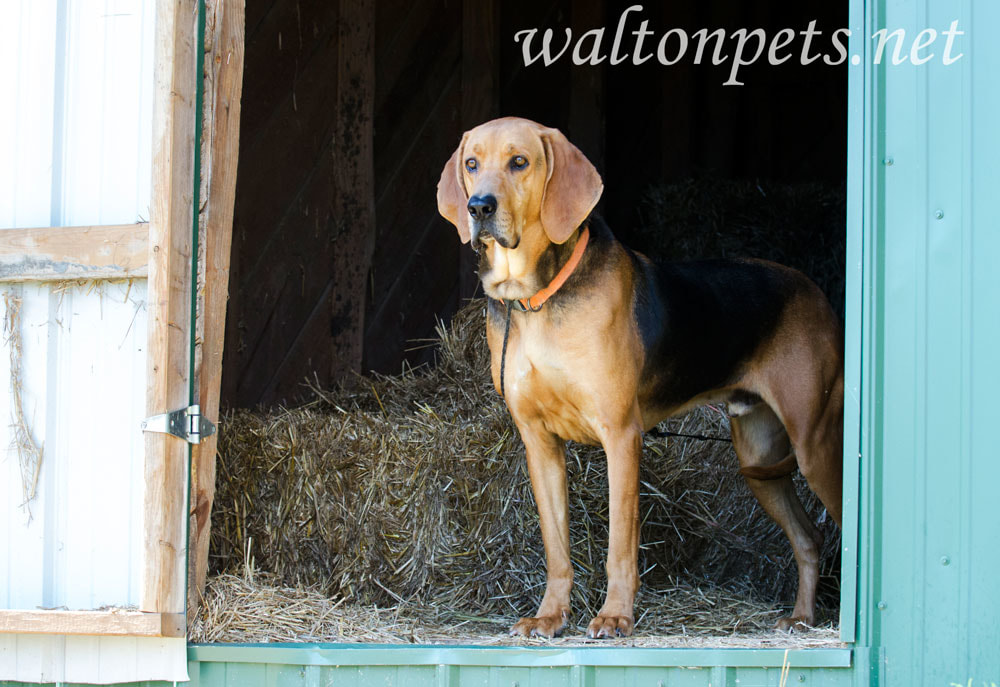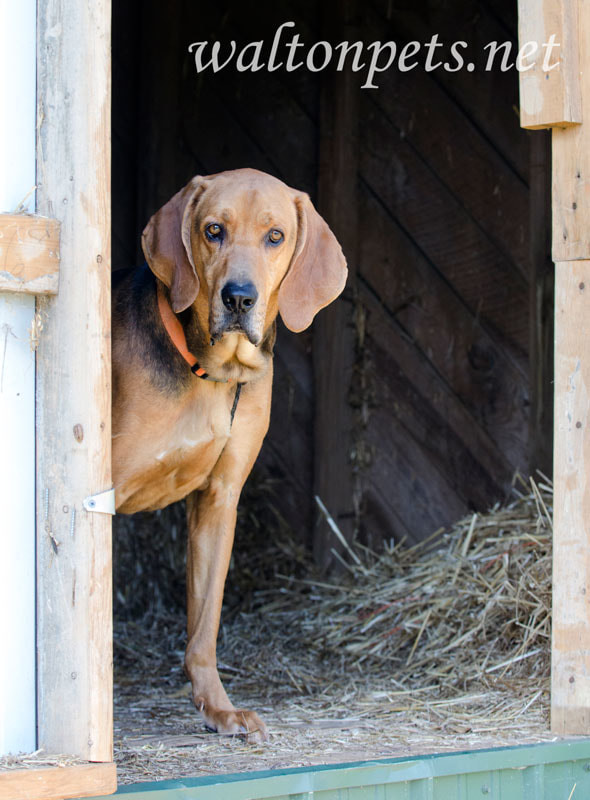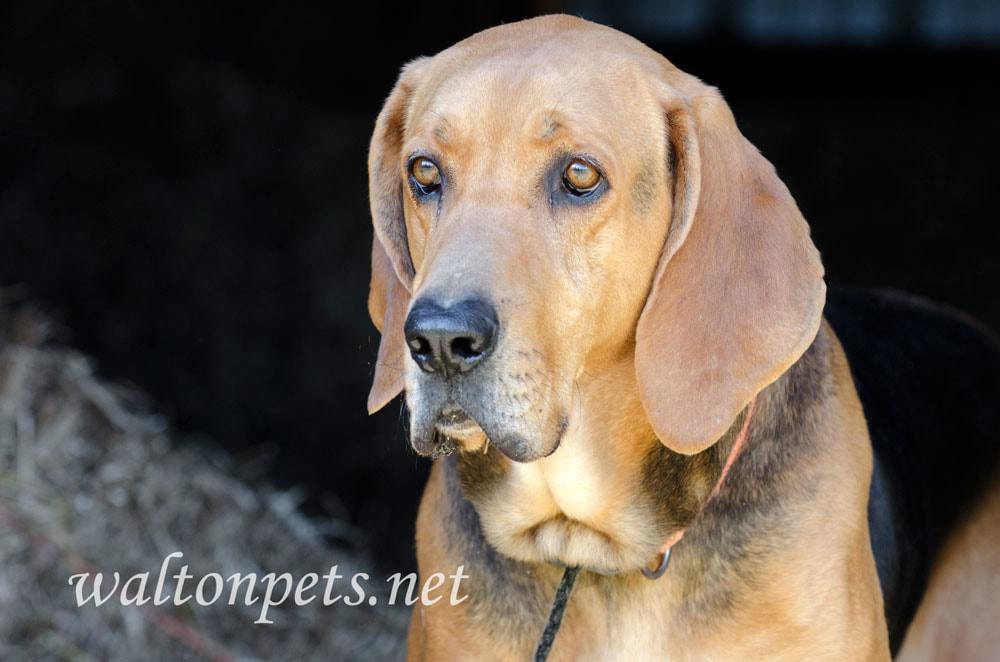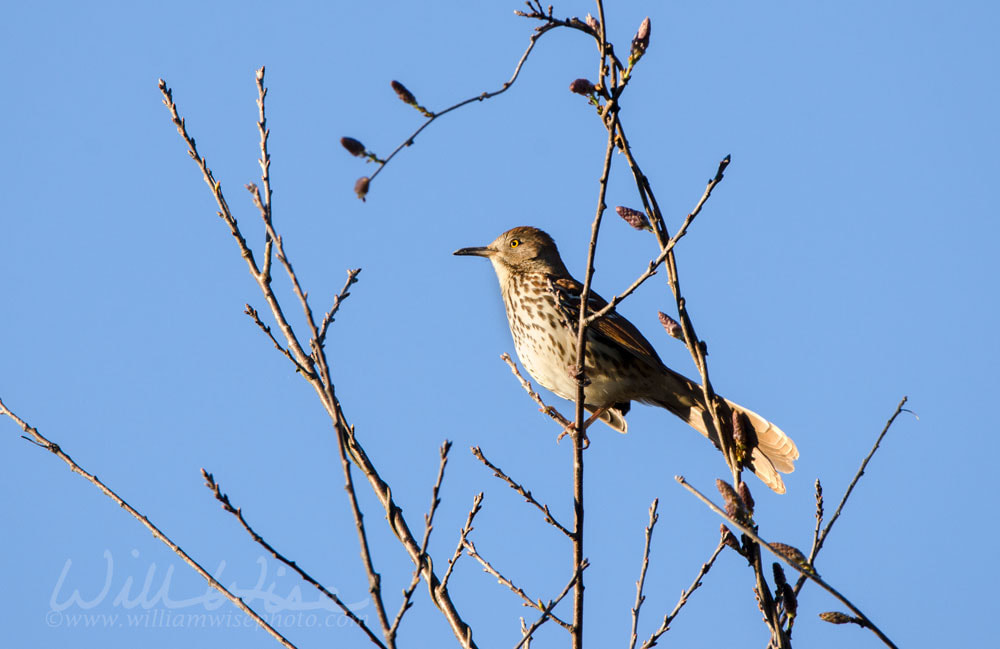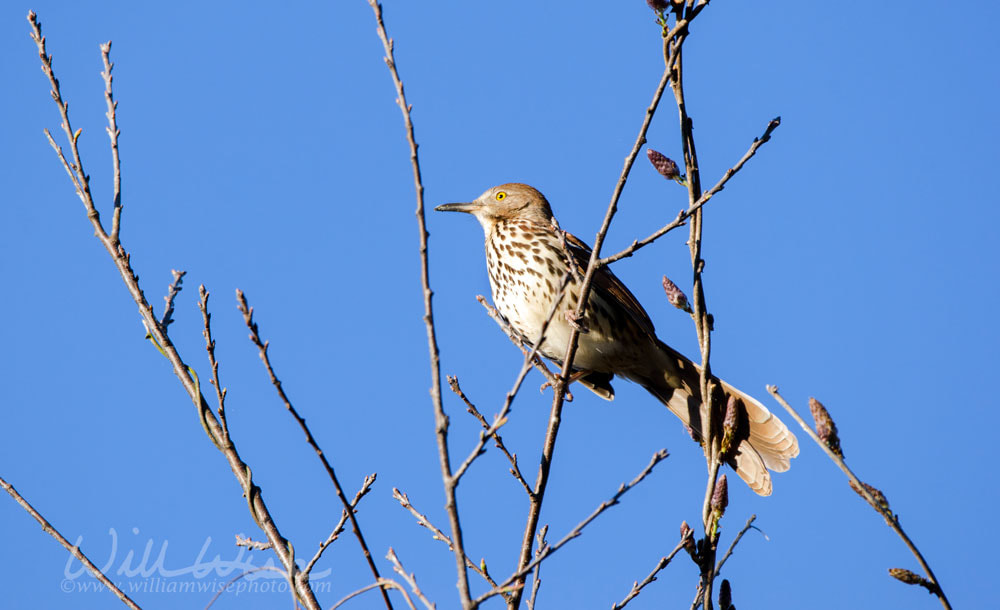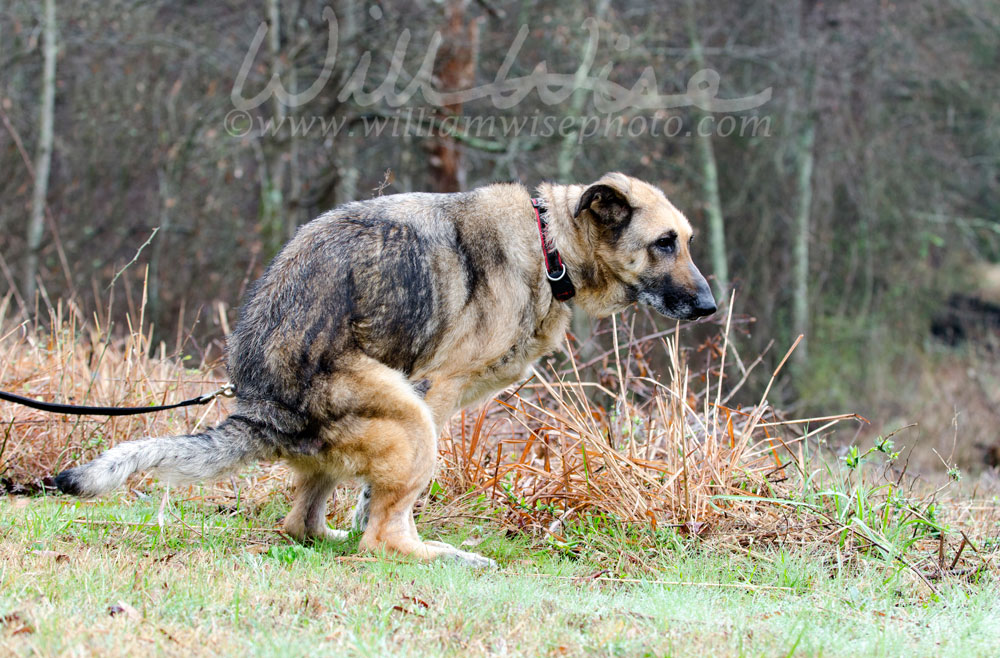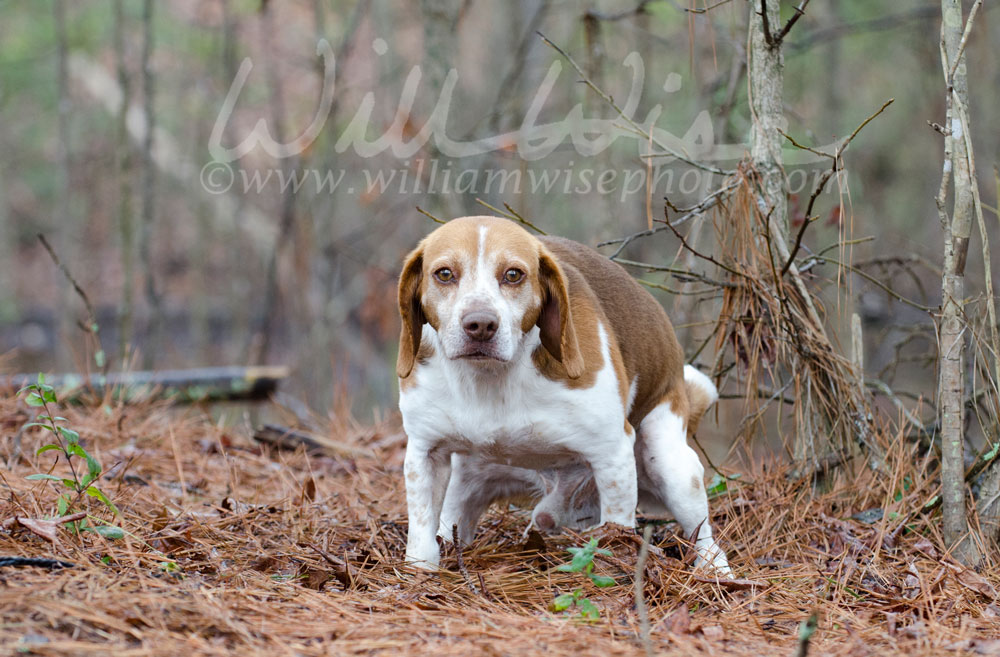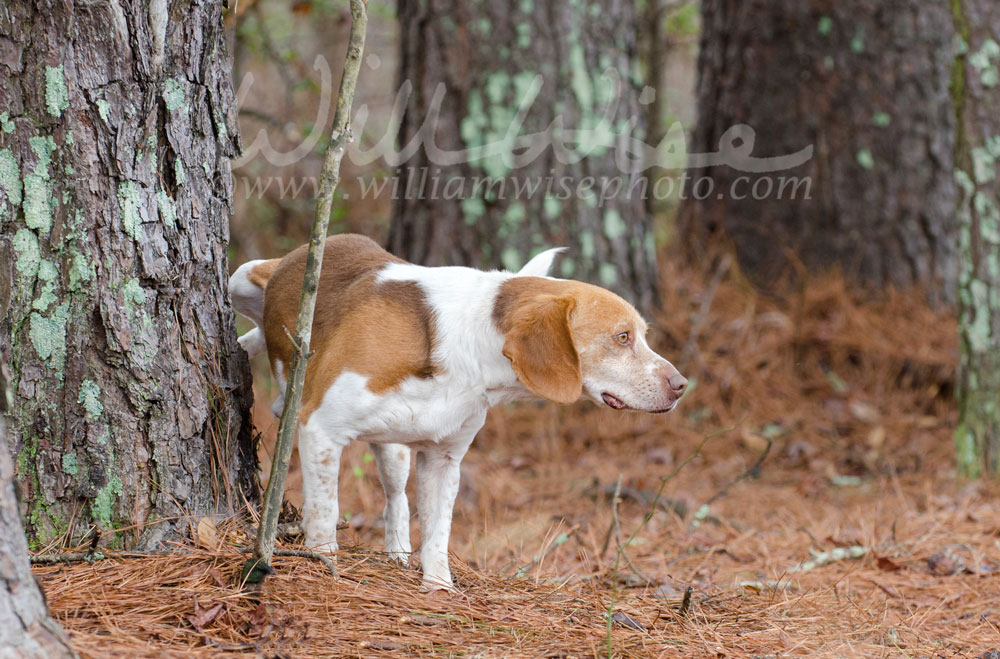Matthew 23:37 ...how often would I have gathered thy children together, even as a hen gathereth her chicks under her wings... 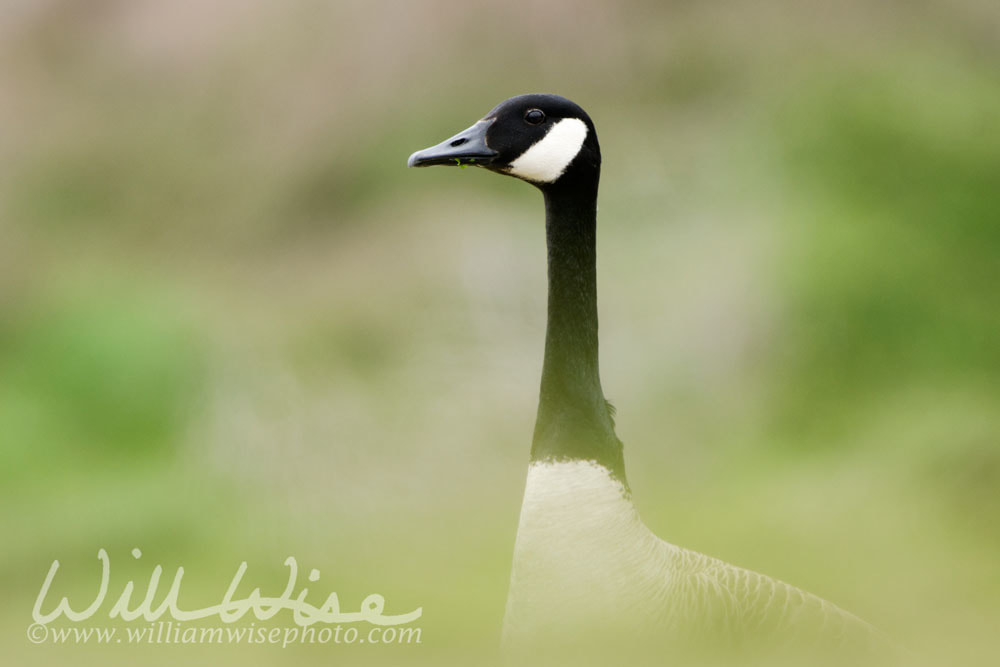 Canada Goose portrait on blurred camoflauged looking green background. Branta canadensis, hen waterfowl bird. This individual arrived on a Walton County Georgia pond to nest and lay eggs in January 2018 and remained through spring. Audubon states Canada Geese may mate for life. Male defends territory with displays, including lowering head almost to ground with bill slightly raised and open, hissing; also pumps head up and down while standing. Nest site chosen by female is usually on slightly elevated dry ground near water, with good visibility. Typically hunted game bird in the United States. Photographed Monroe, GA March 2018. Monday, 1:30 PM - the mother Canada Goose on our pond diligently stands guard and awaits the hatching of her clutch of eggs. Walton County, Georgia 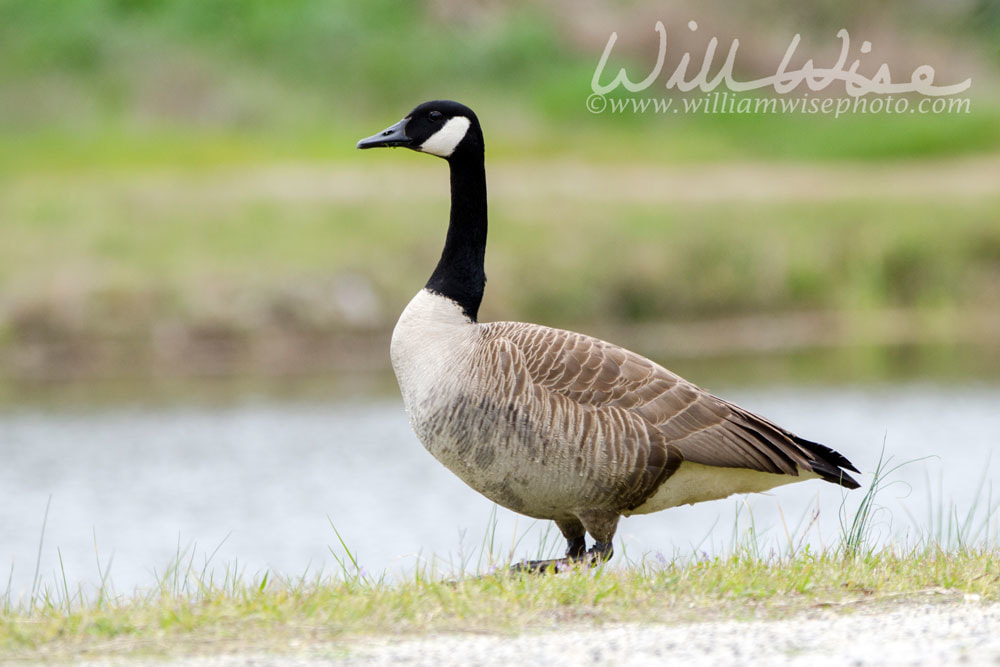 Canada Goose, Branta canadensis, hen waterfowl bird. This individual arrived on a Walton County Georgia pond to nest and lay eggs in January 2018 and remained through spring. Audubon states Canada Geese may mate for life. Male defends territory with displays, including lowering head almost to ground with bill slightly raised and open, hissing; also pumps head up and down while standing. Nest site chosen by female is usually on slightly elevated dry ground near water, with good visibility. Typically hunted game bird in the United States. Photographed Monroe, GA March 2018. 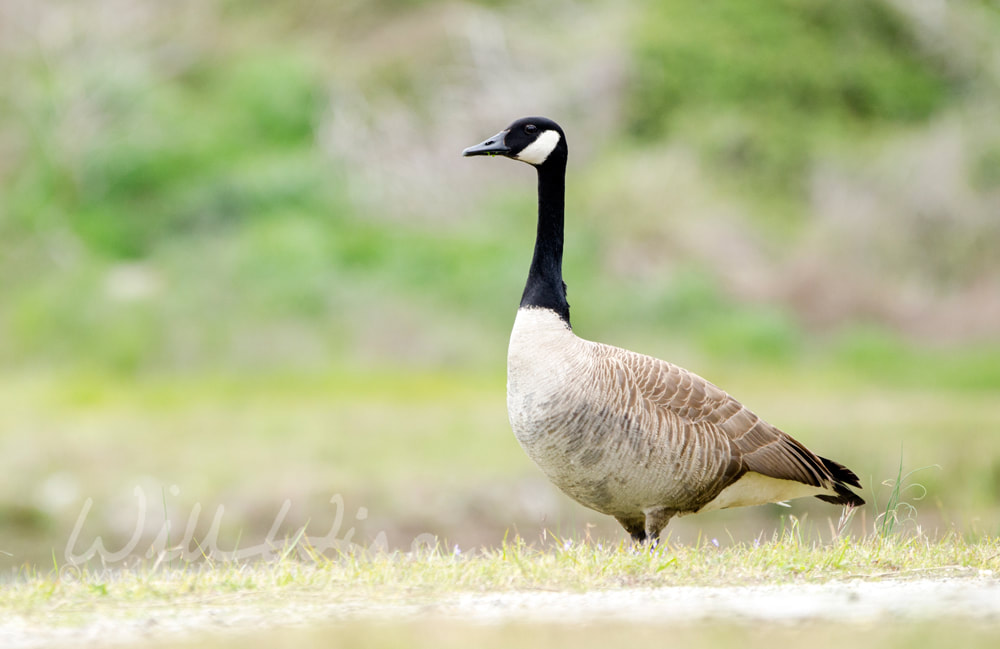 Canada Goose, Branta canadensis, hen waterfowl bird. This individual arrived on a Walton County Georgia pond to nest and lay eggs in January 2018 and remained through spring. Audubon states Canada Geese may mate for life. Male defends territory with displays, including lowering head almost to ground with bill slightly raised and open, hissing; also pumps head up and down while standing. Nest site chosen by female is usually on slightly elevated dry ground near water, with good visibility. Typically hunted game bird in the United States. Photographed Monroe, GA March 2018. 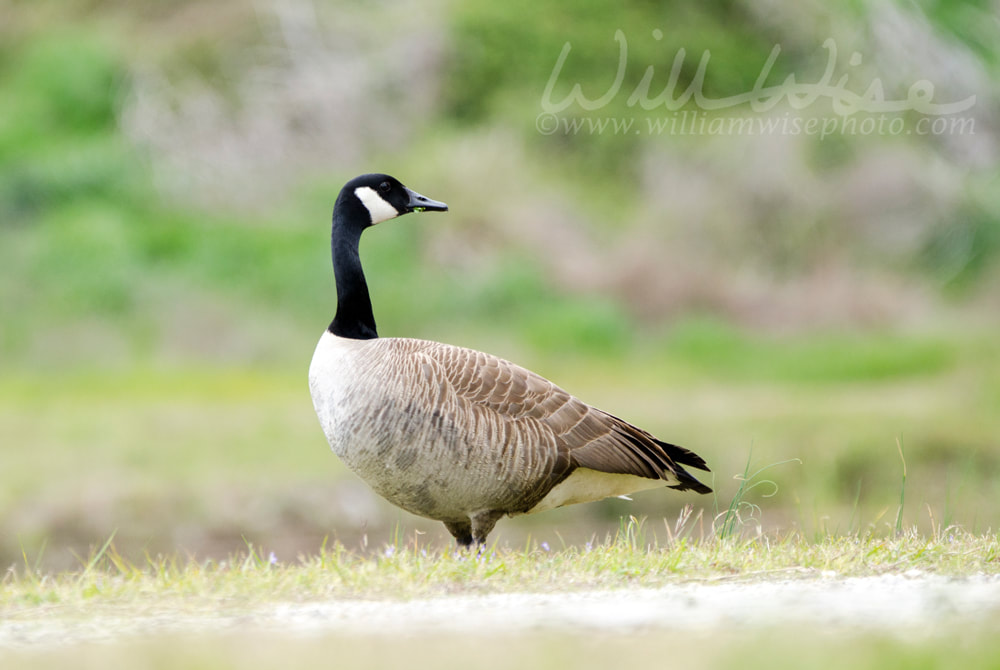 Canada Goose, Branta canadensis, hen waterfowl bird. This individual arrived on a Walton County Georgia pond to nest and lay eggs in January 2018 and remained through spring. Audubon states Canada Geese may mate for life. Male defends territory with displays, including lowering head almost to ground with bill slightly raised and open, hissing; also pumps head up and down while standing. Nest site chosen by female is usually on slightly elevated dry ground near water, with good visibility. Typically hunted game bird in the United States. Photographed Monroe, GA March 2018.
0 Comments
Psalms 68:6 "God makes homes for those who are abandoned; He makes free those who are bound with chains." Friday, 9:17 AM - It is that time of year and love is in the air! A gaggle of boys were hanging around the household of an “in-season” female pup. (Hey folks, get your dogs spayed and neutered and this won’t happen!). When the animal control officer showed up, “Grady” was the only one to stick around and unfortunately ended up in doggy jail for stalking! Grady probably wasn’t too well socialized outside of his owner’s home, but was a tender boy at heart. After getting him out of his kennel, he stuck close by my feet, calming his nervousness by leaning on my legs. Once the trauma of a heartworm test blood-draw and vaccine was over (for which this sweet boy didn’t even need a muzzle), it was outside for a photo shoot. He was again a bit cautious when I pulled out that big, scary lens and pointed it right at him. Unsure of what I was up to, he took a seat on the ground and kept an eye on my camera. But before he plopped down in the pine needles, I was able to get a shot of his awesome, low-rider short legs which added to his funny personality. “Grady” was photographed on March 23, 2018 for the Walton County Animal Control shelter in Monroe, Georgia, USA. He was showcased on the shelter’s website, www.waltonpets.net for adoption or rescue and rescued on April 2, 2018 by Washtington-Wilkes DAWGS Rescue! His rescue was sponsored by pledges from Anne, Cindy, Alice and Judy!  Creation Speaks is a Biblical teaching ministry that uses nature writing and photography to glorify our Creator and teach the truth of creation. “But ask the animals, and they will teach you, or the birds in the sky, and they will tell you; or speak to the earth, and it will teach you, or let the fish in the sea inform you. Which of all these does not know that the hand of the Lord has done this?" Job 12:7-9 "It has been my observation that even people of faith, born-again believers in Christ who love their Creator-redeemer, often lack appreciation for His creation. They fail to comprehend the wondrous beauty all around them. Their lack of knowledge of the handiwork of their Creator keeps them from full appreciation of the eternal benefits of life they have been given." -- From Exceeding Gratitude for the Creator's Plan by Dr. James Gills Psalms 103 Bless the Lord, O my soul, and forget not all his benefits… 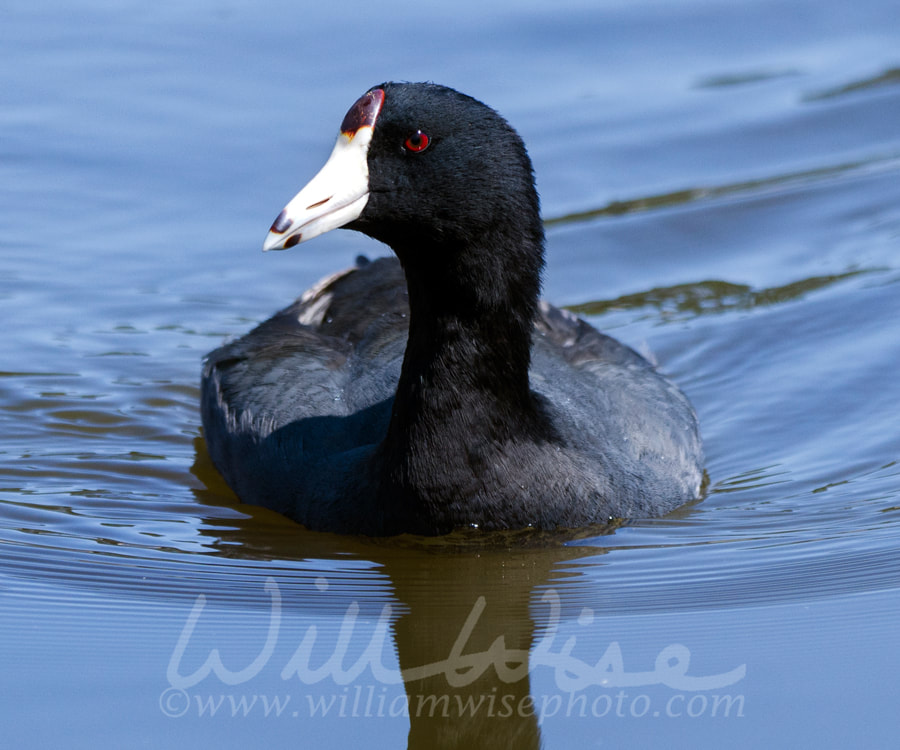 An American Coot, Fulica americana, swimming on blue water pond. This individual arrived in January 2018 and remained through spring. Audubon writes Coots are tough, adaptable waterbirds. Although they are related to the secretive rails, they swim in the open like ducks and walk about on shore, making themselves at home on golf courses and city park ponds. Usually in flocks, they are aggressive and noisy, making a wide variety of calls by day or night. They have strong legs and big feet with lobed toes, and coots fighting over territorial boundaries will rear up and attack each other with their feet. Often seen walking on open ground near ponds. In taking flight they must patter across the water, flapping their wings furiously, before becoming airborne. Psalms 68:6 "God makes homes for those who are abandoned; He makes free those who are bound with chains." Tuesday, 8:44 AM - Remington, or “Rem” for short, was one of several owner surrendered dogs that were turned in to the Walton County Animal Control shelter on March 19, 2018. His owner had hip surgery and could no longer take care of such a big boy. With the shelter getting near capacity, time was of the utmost importance. I had several dogs lined up for photo sessions this morning. We had to move some dogs out to adopters and rescues quickly to avoid bad endings. “Rem” was a bit nervous in the kennel and it showed in a couple of his shots. But that is understandable after being removed from a home you grew up in and put into a loud kennel. But with a few pet photography tricks, I managed a bit of a head tilt and smile. A squeeky toy or ball thrown above the head can work wonders in getting those ears perked up! I wish I had more time to give him a chance to relax and get more shots, but had to move on. That’s how it is in an open intake animal control shelter. They can’t turn people away surrendering animals and you never know when the next one is coming in. “Remington” was photographed for the Walton County Animal Control shelter in Monroe, Georgia, USA on March 20, 2018. He was placed on the shelter’s website, www.waltonpets.net to find him an adopter or rescue. He was rescued on March 26, 2018 by Ollie's Angels Rescue! Psalms 68:6 "God makes homes for those who are abandoned; He makes free those who are bound with chains." Tuesday, 8:32 AM – I was disappointed to return to the animal shelter after weeklong mini vacation for my daughters’ spring break. Not because I don’t like work, but because “Flynn” was still in the shelter and hadn’t been adopted or rescued. “Flynn” was picked up stray by a Walton County Animal Control officer on March 12, 2018. I was able to post a quick photo of him that Monday before leaving for the day. He was an agreeable little guy, not posing any troubles. He had a bit of hair loss, most likely due to a flea allergy, but being small and cute shouldn’t have had a problem getting out. But coming back to the shelter and seeing him still waiting, it was time for a photo session. The Georgia springtime thunderstorms last night left a nice foggy sky perfect for outdoor photography. “Flynn” did a little bit of exploring when we first went outside, but soon began to pose for a few shots. “Flynn” was photographed for the Walton County Animal Control shelter on March 20, 2018 and put on the shelter’s website, www.waltonpets.net. He was rescued on March 21, 2018 by Save A Litter Pregnant Dog Rescue! Rom. 5:12 we read: “Therefore, just as sin came into the world through one man, and death through sin, and so death spread to all men because all sinned.” 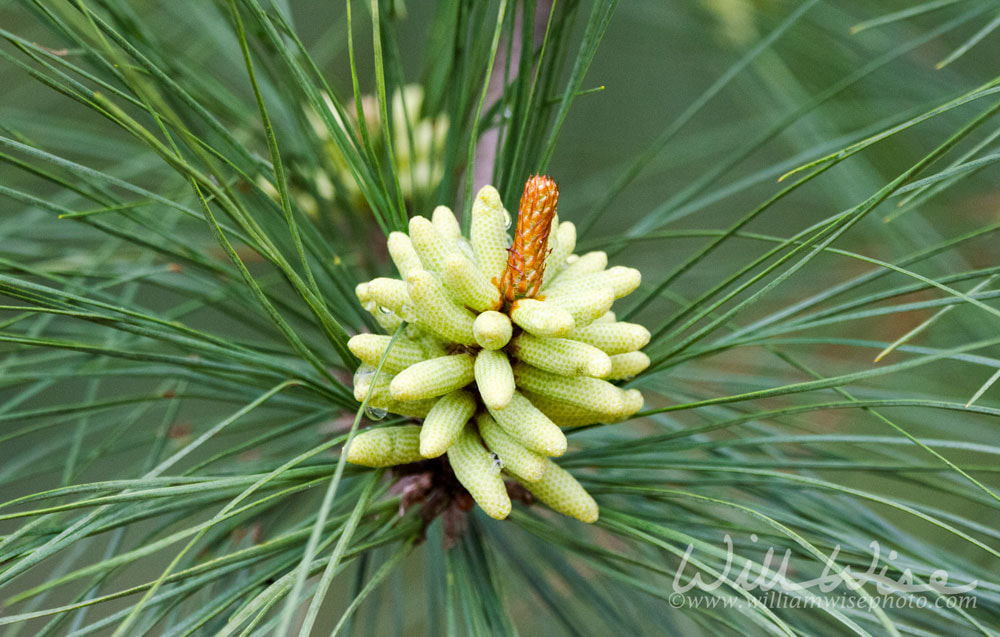 Pollen producing cones of the Loblolly Pine, Pinus taeda, a common pine tree of the southeastern United States. Many people have allergies in the spring. Also called Arkansas pine or North Carolina pine. A large evergreen tree and the largest of the southern pines. Photographed in Athens, Georgia, USA. Monday, 1:08 PM – It is that time of year again when all allergy sufferers are miserable. That greenish-yellow dust is spread everywhere and on everything. Every spring, the air becomes hazy with blowing swaths of pine pollen. The tips of every pine branch are swollen with bright yellow pollen producing cones. After a rain, rivers of yellow run. And when the puddles dry, the pollen remains behind. Showers likely after 1 PM, high 65°  Pollen is one of the most common triggers of seasonal allergies. Many people know pollen allergy as “hay fever.” Experts usually refer to pollen allergy as seasonal allergic rhinitis. Loblolly Pine, Pinus taeda, a common pine tree of the southeastern United States produces pollen each spring causing many people to have allergies and allergic reaction such as sneezing, nasal congestion, runny nose, stuffy head. Photographed in Monroe, Georgia, USA. 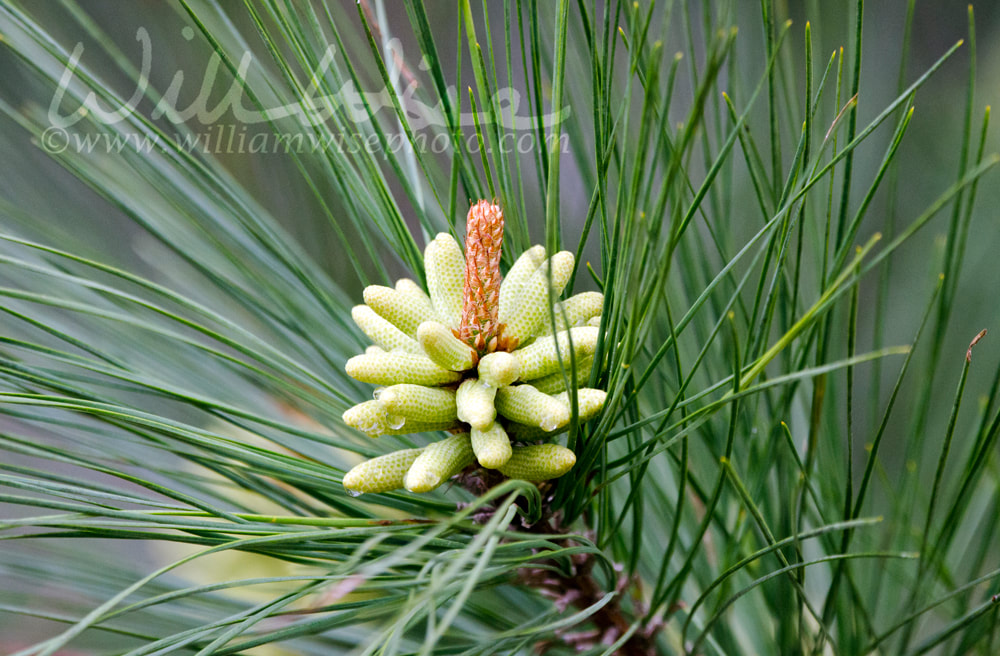 Pollen producing cones of the Loblolly Pine, Pinus taeda, a common pine tree of the southeastern United States. Many people have allergies in the spring. Also called Arkansas pine or North Carolina pine. A large evergreen tree and the largest of the southern pines. Photographed in Athens, Georgia, USA. 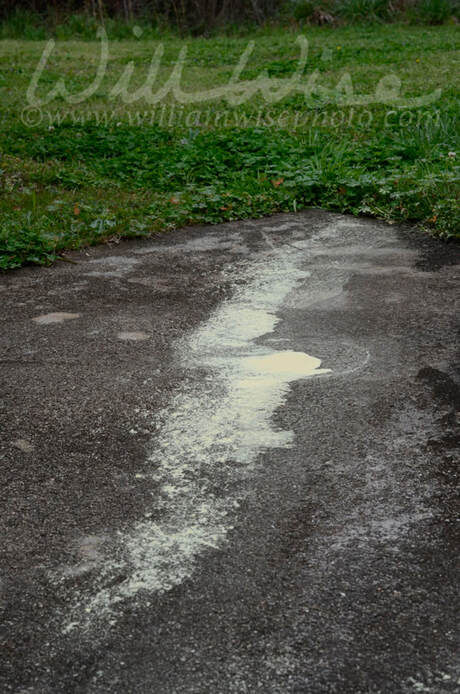 Pollen is one of the most common triggers of seasonal allergies. Many people know pollen allergy as “hay fever.” Experts usually refer to pollen allergy as seasonal allergic rhinitis. Loblolly Pine, Pinus taeda, a common pine tree of the southeastern United States produces pollen each spring causing many people to have allergies and allergic reaction such as sneezing, nasal congestion, runny nose, stuffy head. Photographed in Monroe, Georgia, USA. Tuesday, sunny, high near 57°. Wind 15 mph. Tonight clear, 30°. Sunrise 7:46 AM, sunset 7:39 PM. Day length: 11 hours, 53 minutes. We arrived at the campground just after 2 PM. The entire park was quite empty. It was a very nice, spacious campground lying with in rolling hills of tall pines and hardwoods. Large, picturesque lichen covered boulders were strewn throughout the park, almost as if deliberately placed decoration. Although “spring” break, it was windy and very chilly. After unpacking we walked down to the lakeside. Strong winds were blowing across the water bringing up rolls of waves. We never did take the canoe out on the water though we towed it along for the trip. That first afternoon, we explored the shore and walked about a mile on the blue trail. After dinner we went back down to the water for the golden hour before sunset. Wednesday, March 14 - sunrise 7:45 AM. The prevalent bird around the campsite is the White-breasted Nuthatch. You hear him calling more than any other avian inhabitant of the park. Using my mp3 player, I was able to call one in close for lots of photography while we were sitting around a late afternoon campfire. The winds still strong, we decided to hike the 7 mile yellow trail. Plenty of ups and downs, tall hardwood trees and nice, wide, soft, needle-covered paths. A great place for a trail run, but the elevation would be quite a challenge. Thursday, March 15 – a campfire to end one day, and a campfire to begin the next morning. I love it. I wish we could do it more often. But we’ll enjoy the times we do get to have. It’s a chilly morning, about 33°, but the wind is gone. The lake is smooth and wisps of fog rise off its surface. But our stay this last day is short. A quick breakfast and all packed up by 10 AM. All in all, Red Top Mountain is it beautiful campground. But I can imagine that it is quite busy here in the summer when all the RV spots are occupied. But for an early spring break, it was peaceful and serene and very refreshing. 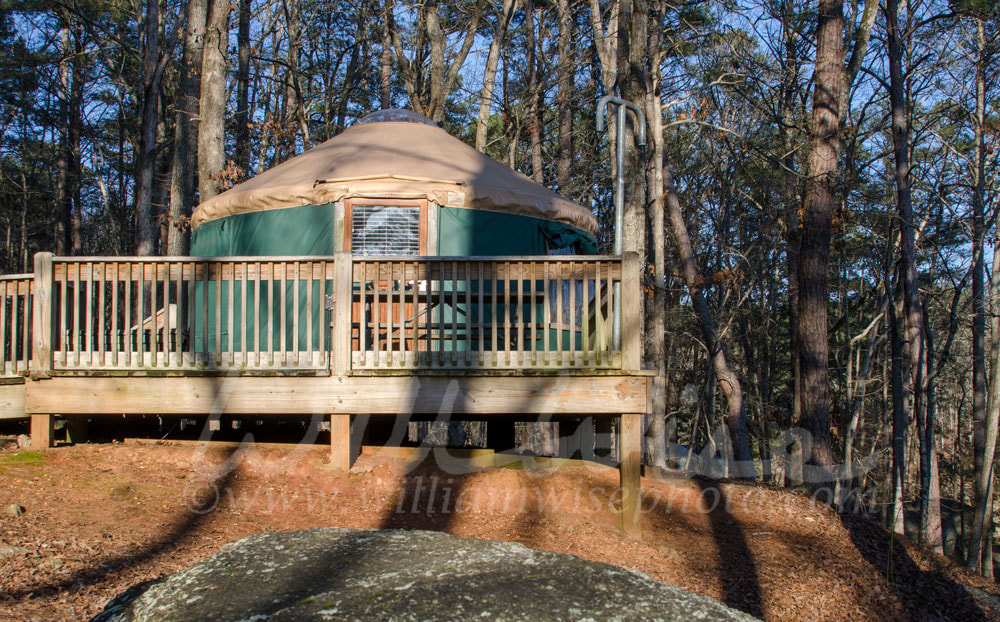 A traditional yurt is a portable, round tent covered with skins or felt and used as a dwelling by nomads in the steppes of Central Asia. Modern yurts may be permanently built on a wooden platform; they may use materials such as steam-bent wooden framing or metal framing, canvas or tarpaulin, Plexiglas dome. Photographed in Red Top Mountain State Park. There are public campgrounds, marinas, RV sites, yurts, and boat launches. Spring, 2018. 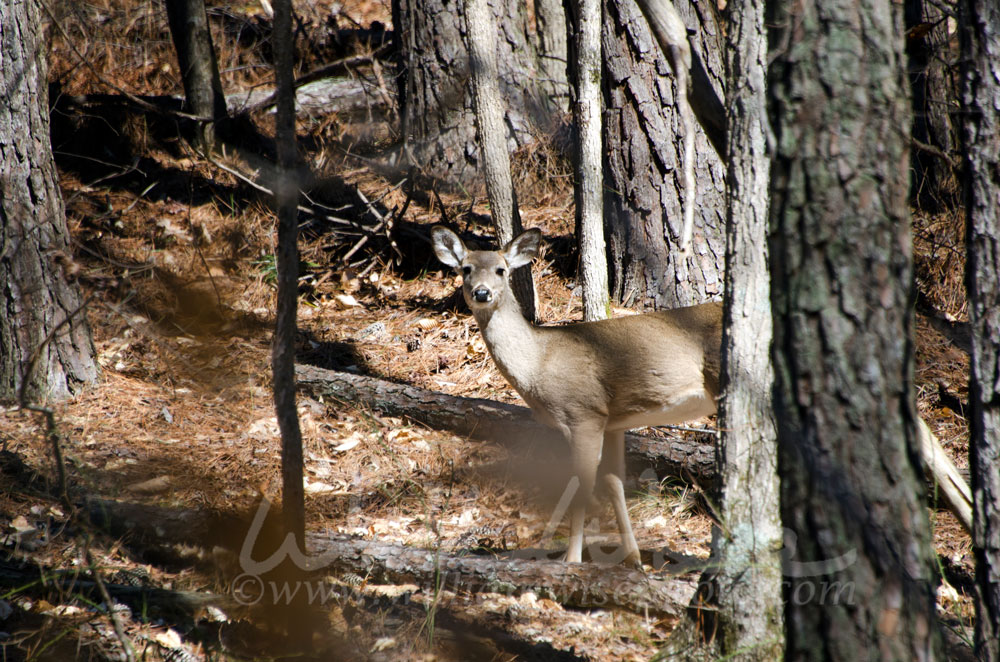 White-tailed Deer, Odocoileus virginianus, female doe camouflaged in woods in Red Top Mountain State Park, Georgia, USA. Throughout the year, the Department of Natural Resources schedules quota White-tailed Deer hunts. Most quota hunts are conducted within wildlife management areas, but each fall a few state parks are selected as sites for deer quota hunts.  Rocky lakeshore boulders on blue water of Lake Allatoona, Georgia, USA. Lake Allatoona covers more than 12,000 acres and has 270 miles of shoreline. The dam that created Allatoona Lake first began blocking the waters of the Etowah River in 1949. Photographed in Red Top Mountain State Park. There are public campgrounds, marinas, RV sites, yurts, and boat launches. Spring, 2018.  William Wise Photo Nature Notes is a wildlife, birding and nature photography blog documenting the beauty, design and wonder of God’s creation. -- "What a wildly wonderful world, God! You made it all, with Wisdom at Your side, made earth overflow with your wonderful creations." Psalms 104 The Message 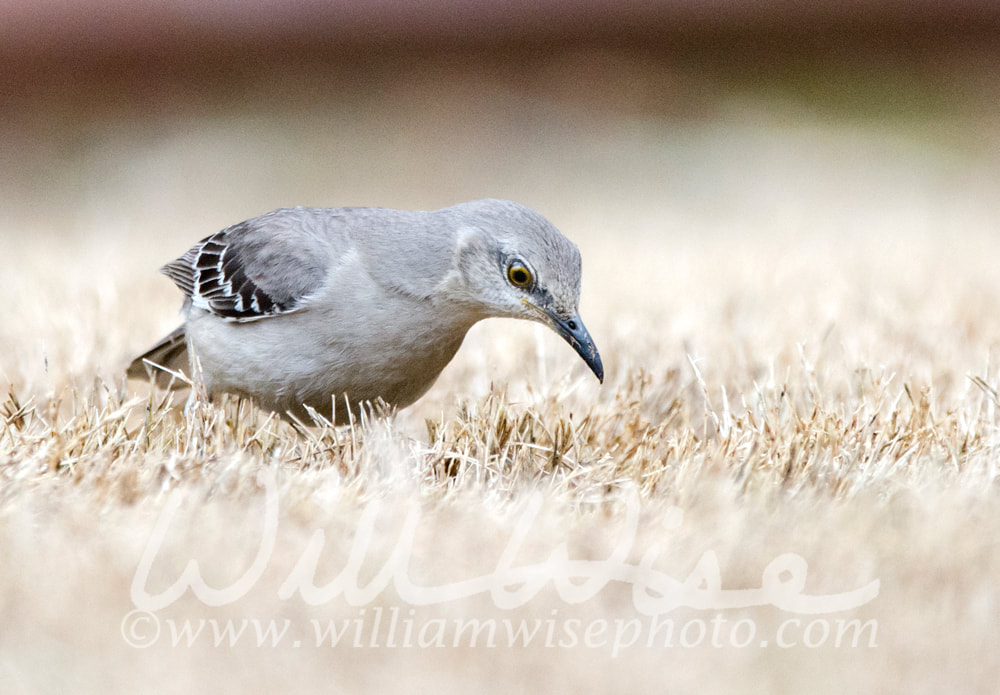 Northern Mockingbird, Mimus polyglottos, a common songbird thrush of the southeastern United States. Looking for crickets and spiders on freshly mowed dormant bermuda grass lawn. The Northern Mockingbird frequently gives a `wing flash` display, where it half or fully opens its wings in jerky intermediate steps, showing off the big white patches. No one knows why it does this, but it may startle insects, making them easier to catch. The northern mockingbird is the only mockingbird commonly found in North America. Photographed in early spring in Athens, Georgia, USA Genesis 41:35 And let them gather all the food of those good years that come... Sunday, 3:23 PM – It’s a normal, overcast March afternoon in my backyard. Northern Mockingbirds flutter across the lawn flashing white wing bars to scare up an insect snack. Dark-eyed Juncos hop below the bird feeders checking each empty husk for a missed seed. A couple of Eastern Chipmunks dart from hole to hole to gather the black-oil sunflower seeds that fall from the Cardinal’s mouths. All of the usual birds and critters are here doing what they do; gathering, eating, and drinking. On a sudden, with a dive as quick as a lightning flash, a Red-tailed Hawk scatters all of the birds at the feeder. In a fluttering fury, all the little birds take wing and disappear. But the hawk did not come up with empty talons. The amazing raptor, or bird-of-prey, within the blink of an eye, seized upon a small chipmunk and quickly carried it off. The little chipmunk didn’t suspect a thing. It was so fast, the scene was long over before it registered in my mind and had I even thought of picking up my camera. Just another day of hunting and gathering in the great, wide natural world. Athens, Clarke County, Georgia 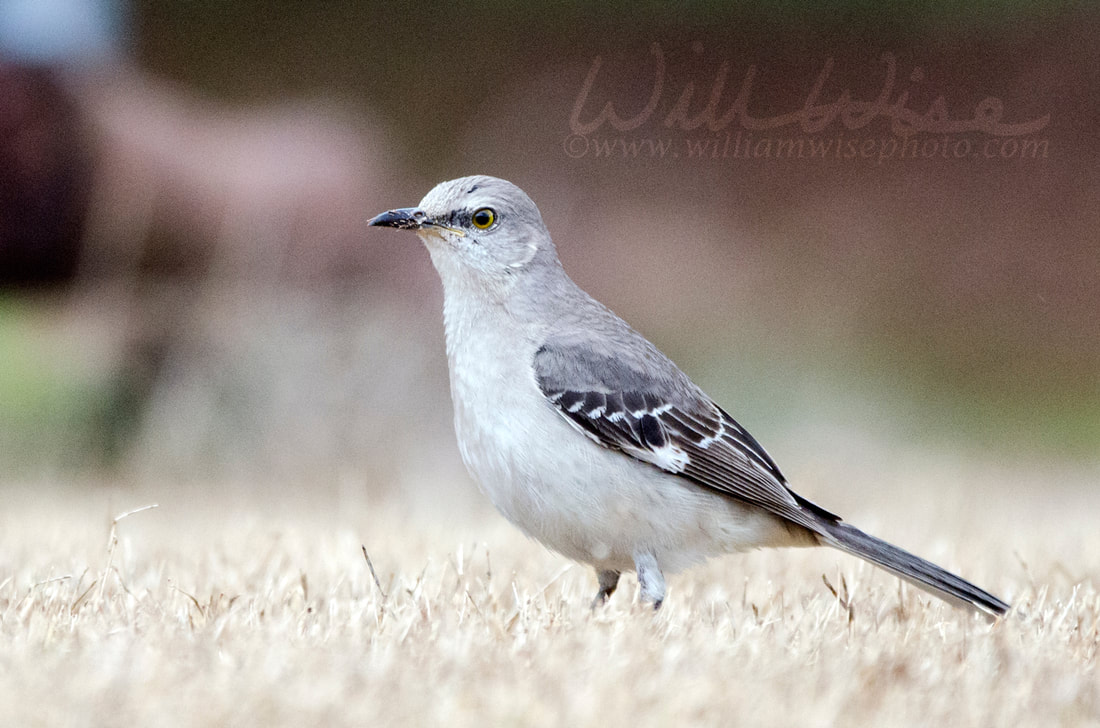 Northern Mockingbird, Mimus polyglottos, a common songbird thrush of the southeastern United States. Looking for crickets and spiders on freshly mowed dormant bermuda grass lawn. The Northern Mockingbird frequently gives a `wing flash` display, where it half or fully opens its wings in jerky intermediate steps, showing off the big white patches. No one knows why it does this, but it may startle insects, making them easier to catch. The northern mockingbird is the only mockingbird commonly found in North America. Photographed in early spring in Athens, Georgia, USA  Creation Speaks is a Biblical teaching ministry that uses nature writing and photography to glorify our Creator and teach the truth of creation. “But ask the animals, and they will teach you, or the birds in the sky, and they will tell you; or speak to the earth, and it will teach you, or let the fish in the sea inform you. Which of all these does not know that the hand of the Lord has done this?" Job 12:7-9 John 18:1-2 When Jesus had spoken these words, He went forth with his disciples over the brook Cedron, where was a garden, into the which He entered, and His disciples….for Jesus ofttimes resorted thither with His disciples. "God has a special love for gardens, it seems, designing them especially so that they best suit His highest creation - mankind. When he created Adam and Eve, He planted a garden for them to enjoy and to tend. And He came to commune with that first couple there in the cool of the day. "In the New Testament, we read that Jesus retired often to pray in a garden place. Even in the place where Jesus was crucified, there was a garden, and the tomb where our Savior was laid it was in that garden. It was in that garden that He revealed the fact of His resurrection to the world. "As we cultivate the soil of our hearts, we prepare a beautiful garden for the Lord to come and commune with us, and we with Him. Filled with appreciation for our Creator, our hearts will then be characterized as a garden of prayer." Quoted from "Exceeding Gratitude for the Creator's Plan" by Dr. James P. Gills 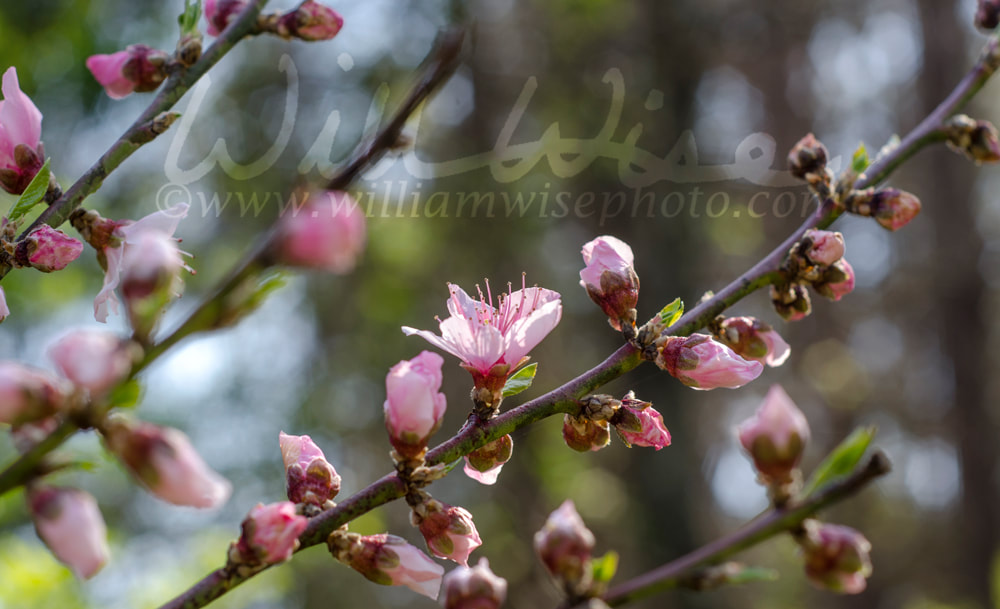 Pink, white and violet buds and blossoms of the Cherry Tree in March, Georgia, USA. A cherry blossom is the flower of any of several trees of genus Prunus, particularly the Japanese cherry, Prunus serrulata, which is called sakura. Each year, Macon GA hosts the annual International Cherry Blossom Festival. Also known as the Pinkest Party on Earth. Photographed in Monroe, Georgia, USA. 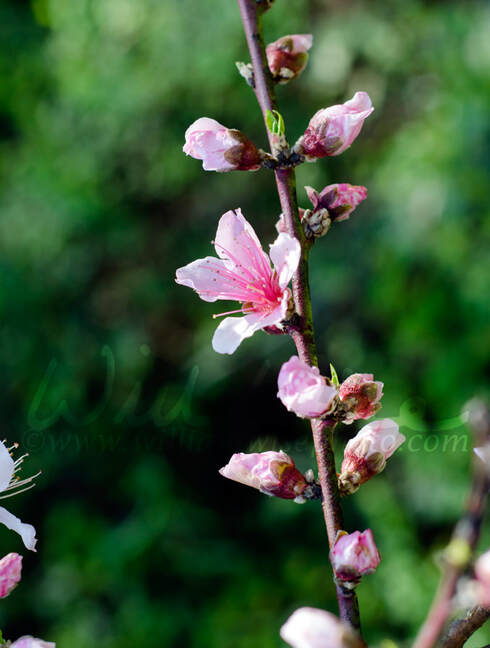 Pink, white and violet buds and blossoms of the Cherry Tree in March, Georgia, USA. A cherry blossom is the flower of any of several trees of genus Prunus, particularly the Japanese cherry, Prunus serrulata, which is called sakura. Each year, Macon GA hosts the annual International Cherry Blossom Festival. Also known as the Pinkest Party on Earth. Photographed in Monroe, Georgia, USA. 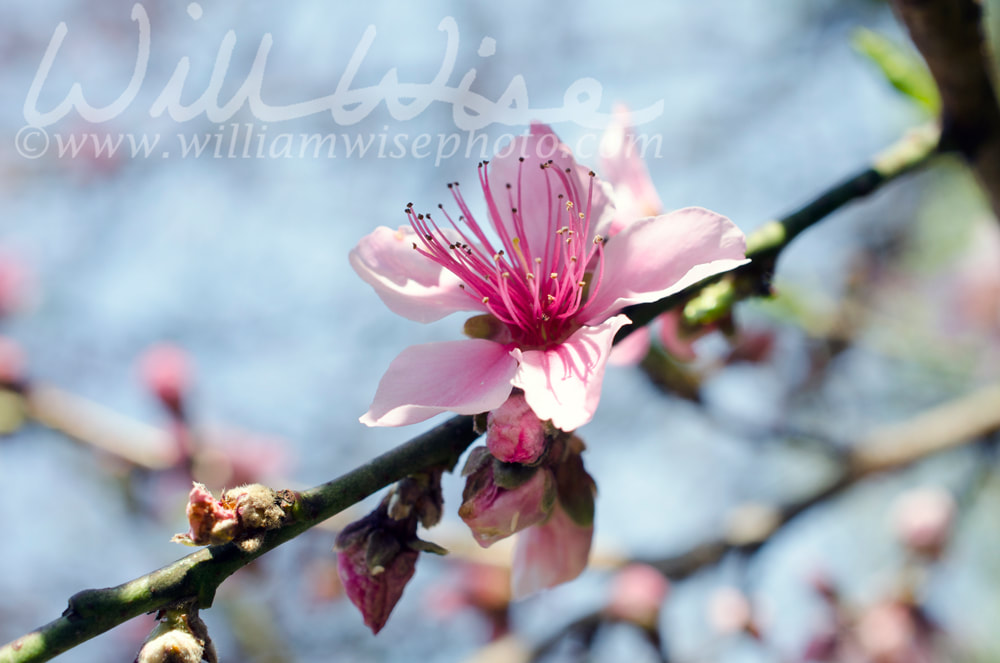 Pink, white and violet buds and blossoms of the Cherry Tree in March, Georgia, USA. A cherry blossom is the flower of any of several trees of genus Prunus, particularly the Japanese cherry, Prunus serrulata, which is called sakura. Each year, Macon GA hosts the annual International Cherry Blossom Festival. Also known as the Pinkest Party on Earth. Photographed in Monroe, Georgia, USA. 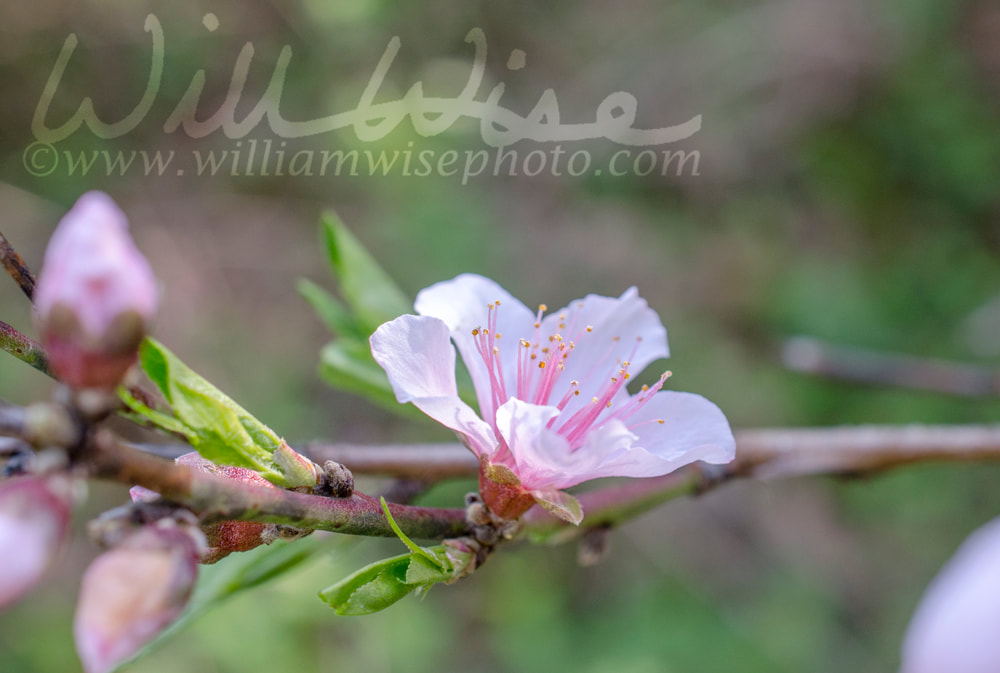 Pink, white and violet buds and blossoms of the Cherry Tree in March, Georgia, USA. A cherry blossom is the flower of any of several trees of genus Prunus, particularly the Japanese cherry, Prunus serrulata, which is called sakura. Each year, Macon GA hosts the annual International Cherry Blossom Festival. Also known as the Pinkest Party on Earth. Photographed in Monroe, Georgia, USA. 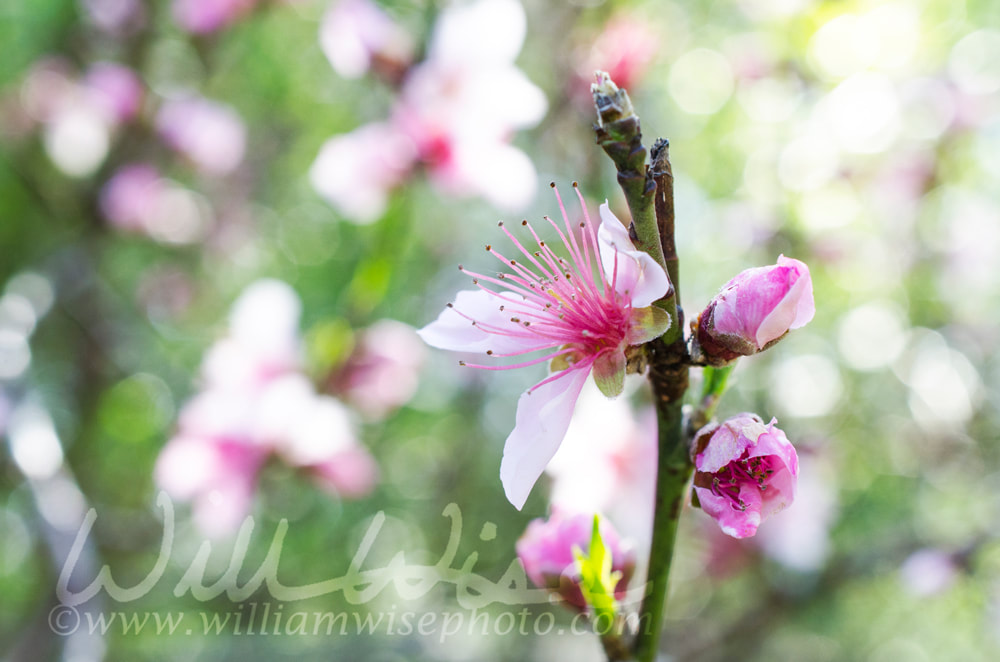 Pink, white and violet buds and blossoms of the Cherry Tree in March, Georgia, USA. A cherry blossom is the flower of any of several trees of genus Prunus, particularly the Japanese cherry, Prunus serrulata, which is called sakura. Each year, Macon GA hosts the annual International Cherry Blossom Festival. Also known as the Pinkest Party on Earth. Photographed in Monroe, Georgia, USA. Psalms 68:6 "God makes homes for those who are abandoned; He makes free those who are bound with chains." Thursday, 8:32 AM – “Clover” was another stray dog to be picked up by a Walton County Animal Control officer in Monroe, GA. He was a very sweet, tender and gentle boy. His submissive side made it a bit difficult to get him to look at the camera. But his warm brown coat and soft black muzzle complimented the beautiful glowing sunrise on this somewhat cooler morning in early spring. “Clover” also seemed an easy boy to get along with when it came to other dogs as well. He was all gentle wags and sniffs when being introduced to other shelter dogs. When it came to another pup that was a bit too assertive, “Clover” didn’t retaliate and just backed off and gave the other pup some space. For some reason “Clover” was favoring his front right leg and would at times let out a little holler as we walked out to the photography spot. After his photo session, I looked more closely thinking he might have a thorn in his pad. But without seeing any visible injuries, I wasn’t sure if it was his foot, leg or shoulder. Hopefully a large-hearted rescue or adopter would come along quickly and get him checked out by a veterinarian. “Clover” was photographed for the Walton County Animal Control shelter in Monroe, Georgia on March 8, 2018. He was posted for adoption or rescue on the shelter’s website, www.waltonpets.net. He was rescued on March 11, 2018 by SavAPet Rescue! Psalms 68:6 "God makes homes for those who are abandoned; He makes free those who are bound with chains." Thursday, 2:07 PM - “If I had the room, I’d take him home!” I know, everybody says that all the time. But for me it is true with Ranger! What a big, handsome boy. I love hounds. Coonhounds, Bloodhounds, Walker Hounds, Bluetick Hounds… and those big, velvety, drooping ears are always so photogenic! “Ranger” was surrendered to the Walton County Animal Control shelter by his owner on March 8, 2018. At least he was already neutered. Being confident he’d have a good outcome, I microchipped him as a bonus for his new owner. Not wanting to loose time on getting him on the adoption website, www.waltonpets.net, I took him straight outdoors for a photo session. Being late afternoon, all of my shady spots were gone. Since I don’t like the look of the full sun shots, we walked over to the small hay barn by the Public Works compound. I tethered “Ranger” to a hay bale so he couldn’t keep following me out the door. I was pleasantly surprised how the shady interior of the barn went all to black on the portraits. The other shots with the hay bales in the background really give the feel of our rural, countryside animal shelter here in the South! “Ranger” was photographed for the Walton County Animal Control Shelter in Monroe, Georgia on March 8, 2018 and placed on the shelter’s adoption website www.waltonpets.net. He was adopted on March 12, 2018! Psalms 68:6 "God makes homes for those who are abandoned; He makes free those who are bound with chains." Wednesday, 2:35 PM - How irresistibly cute!!!! It seems that “puppy season” is beginning. The lengthening daylight hours and warmer weather tends to trigger love in all the critters. Each spring the shelter begins taking in puppy after puppy, kitten after kitten. If my shutter is fast enough to get them all posted quickly, we can get most of them adopted and rescued without too much of a backup. “Waylon” was a cute little black mixed breed puppy that was surrendered to Walton County Animal Control on March 7, 2018. A gentleman and his son took in the little guy, but quickly realized the demands of such a young puppy (probably the whining demands all night long!). I brought “Waylon” into the makeshift studio I normally use for the cats and kittens. He quickly got cozy and took a short nap under a fuzzy fleece blanket making for a cute shot! “Waylon” was photographed on March 7, 2018 for the Walton County Animal Control shelter in Monroe, Georgia USA. He was posted on the shelter’s adoption website, www.waltonpets.net to find and adopter or rescue. He was rescued on March 8, 2018 by Washington Wilkes DAWGS Rescue! Psalms 68:6 "God makes homes for those who are abandoned; He makes free those who are bound with chains." Wednesday, 9:17 AM – “Buster” is a cute low-rider mixed breed puppy that was surrendered to the Walton County Animal Control shelter in Georgia on March 6, 2018. The man who brought him in said his original owner left a few months ago and he couldn’t care for a puppy. He is a quiet guy and sat nice and calm for his outdoor photos. With the sunrise coming earlier, I had lost my normal shady spots for his photos. I popped a little fill flash on a couple, but I don’t much care for the “harsher” look. But “Buster” is cute enough to overcome my amateur photography! “Buster” was photographed on March 7, 2018 for the Walton County Animal Control Shelter in Monroe, Georgia and placed for adoption on the shelter’s website, www.waltonpets.net. He was adopted the following day! Psalm 98:5 "Sing your praise to the Lord with... melodious song." 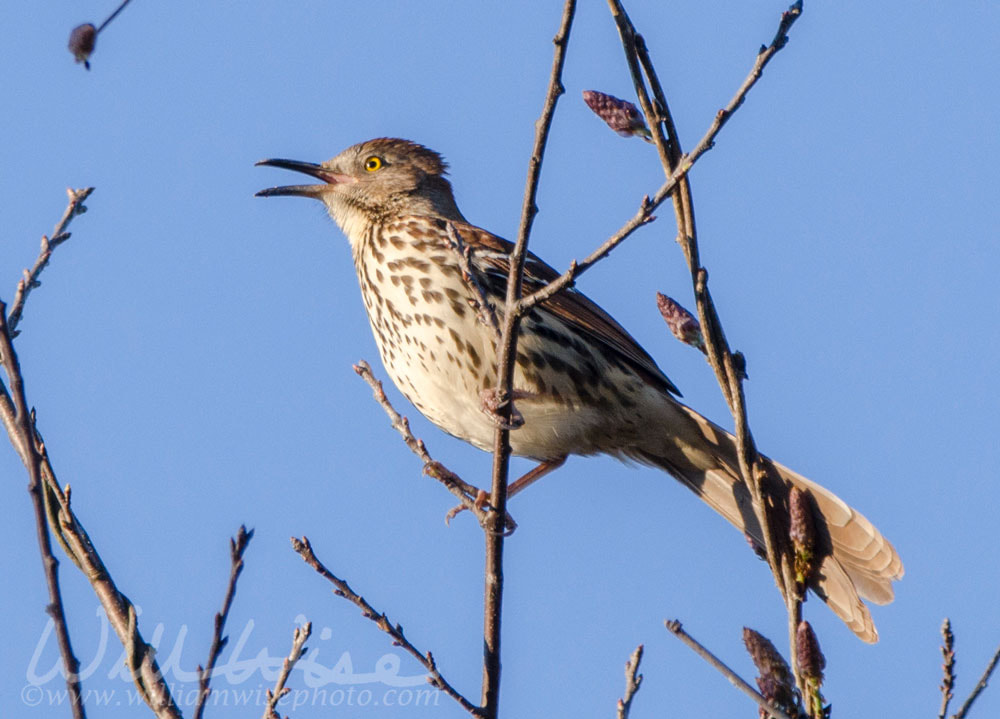 Brown Thrasher, Toxostoma rufum, a common songbird of the eastern United States, singing in a tree against a blue sky backdrop in early spring. Walton County, city of Monroe, Georgia USA. Brown Thrashers are accomplished songsters that may sing more than 1,100 different song types and include imitations of other birds, including Chuck-will’s-widows, Wood Thrushes, and Northern Flickers. During spring and early summer, males climb higher to sing from exposed perches. Listen for a song with a pattern of a Northern Mockingbird, but with phrases repeated only in pairs rather than in triplets. The days lengthen and the dark drive to work is now replaced with a picturesque blue sky and a glowing sunrise. Now that the sun is rising earlier, nearly my entire morning drive is illuminated and I can watch for morning deer or wildlife to photograph along my 45-minute commute through the country. But alas, Daylight Savings Time next week will push the drive back into the dark for a short period. As I near work, I pull my car around to the water retention pond before heading into the office. The two Canada Geese are still there, but the American Coot and the Redhead Ducks are gone. A delightful morning chorus breaks the chilled morning air. Up high in one of the newly blooming trees, I hear what I thought was a Mockingbird. Instead of ignoring the “common”, I turn to look… a Brown Thrasher in the tree top is singing away and making melodies with all its heart. My camera is always by my side and at the ready. It was quite an amazing spectacle to observe these complex songs and melodies in triplicate coming out of a mouth that has no lips! The birds have only two hard, stiff beak parts opening and closing; so unlike how we shape our mouths for whistling. How is it done??? The Cornell Lab of ornithology explains, “With over 1,000 song types, the Brown Thrasher (Toxostoma rufum) has one of the largest repertoires in the bird world. As part of that incredible variety, the thrasher sometimes sings two sweeping tones at the same time—a feat made possible by its two-sided vocal organ. By controlling each side of the syrinx independently, thrashers create unique sounds that only a bird has the ability to produce.” www.allaboutbirds.org. Walton County, Georgia, The other day I was putting together a slideshow for a presentation to a local neighborhood association about the animal control ordinances in our city. No problem! I have thousands of dog and cat images in my portfolio. But when I came to the “pooper scooper” law, I came up short! No photos of dogs or cats doing their business. Often being house trained, the first thing many of the dogs do when taken out of the animal shelter for their adoption photos is use the bathroom. I normally turn away my lens, hold my nose and wait. After all, why would you photograph a subject in such a vulnerable and humiliating situation? And who in their right mind would want to purchase that photo?! Well, while preparing my presentation on the “pooper scooper” law, I realized there might be a need. There just might be someone out there needing a dog-doing-his-business photo. I uploaded to Dreamstime and the screeners didn’t turn up their noses at it… although they might have plugged them! Need stock photos for your website or publication? Please don’t steal or pirate images from this site. Purchase from my gallery on dreamstime.com. All stock sale proceeds go to maintain the shelter’s photography equipment and pay for the adoption website, www.waltonpets.net. Thanks! |
Categories
All
Archives
November 2024
|
|
All content is ©williamwisephoto.com. Please don't steal images. My images are available at dreamstime.com. Stock sales go into the shelter photography program.
|
In December 1993 I came to know the Designer and Creator of this wonderful planet and its creatures: Jesus Christ.
|
Donations help support the animal shelter adoption photography equipment and adoption website hosting and domain fees. Thanks for your support!
|


